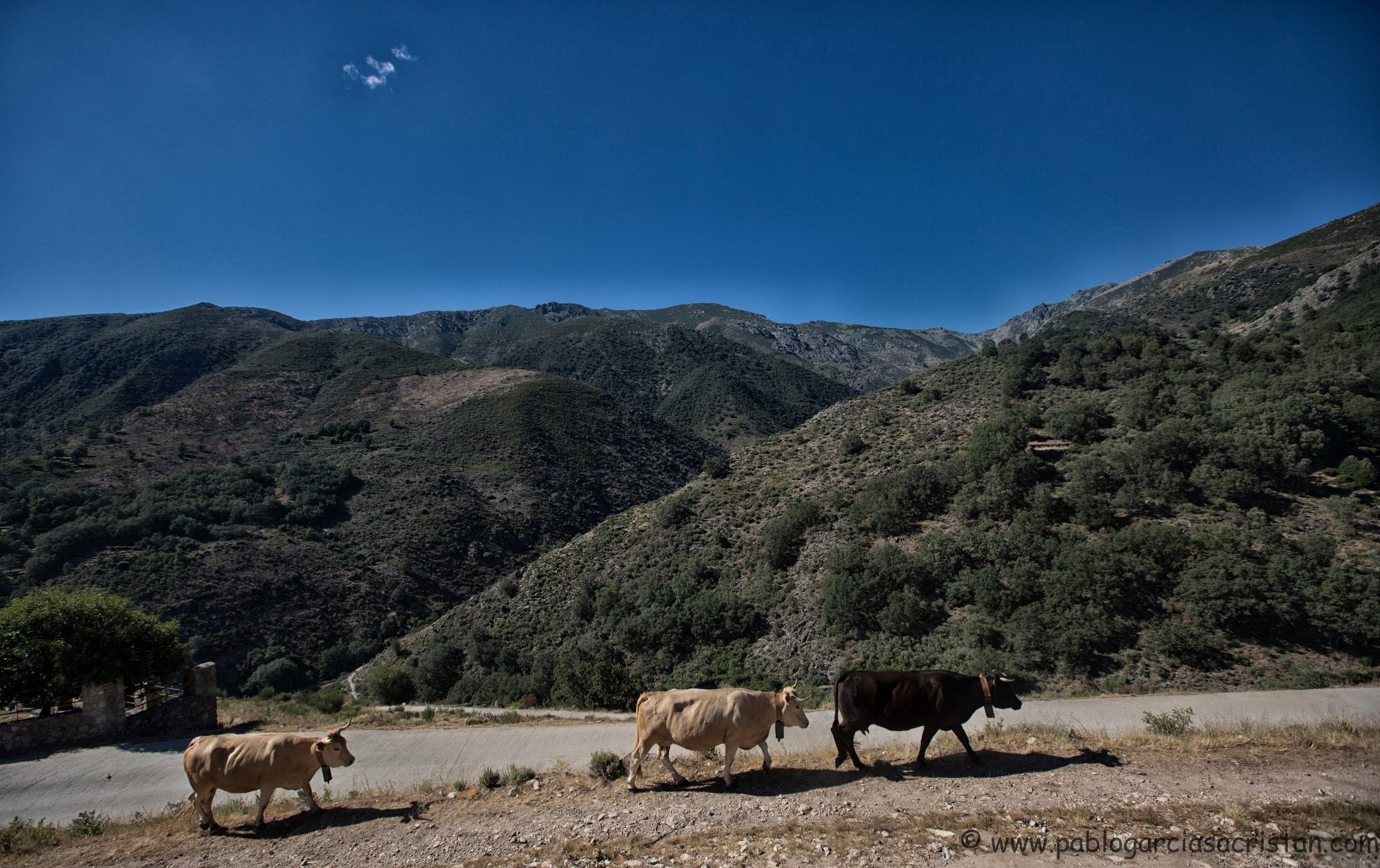
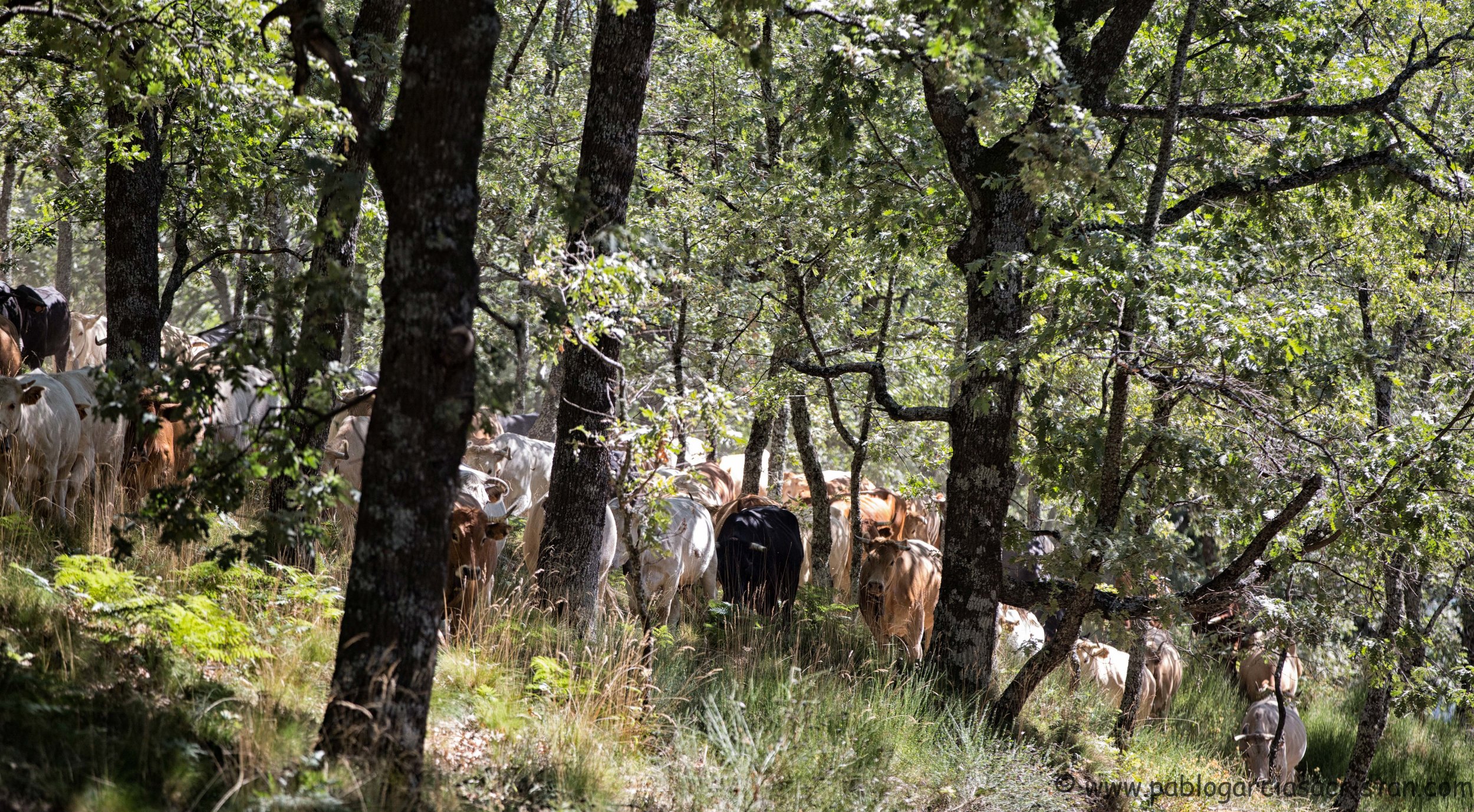
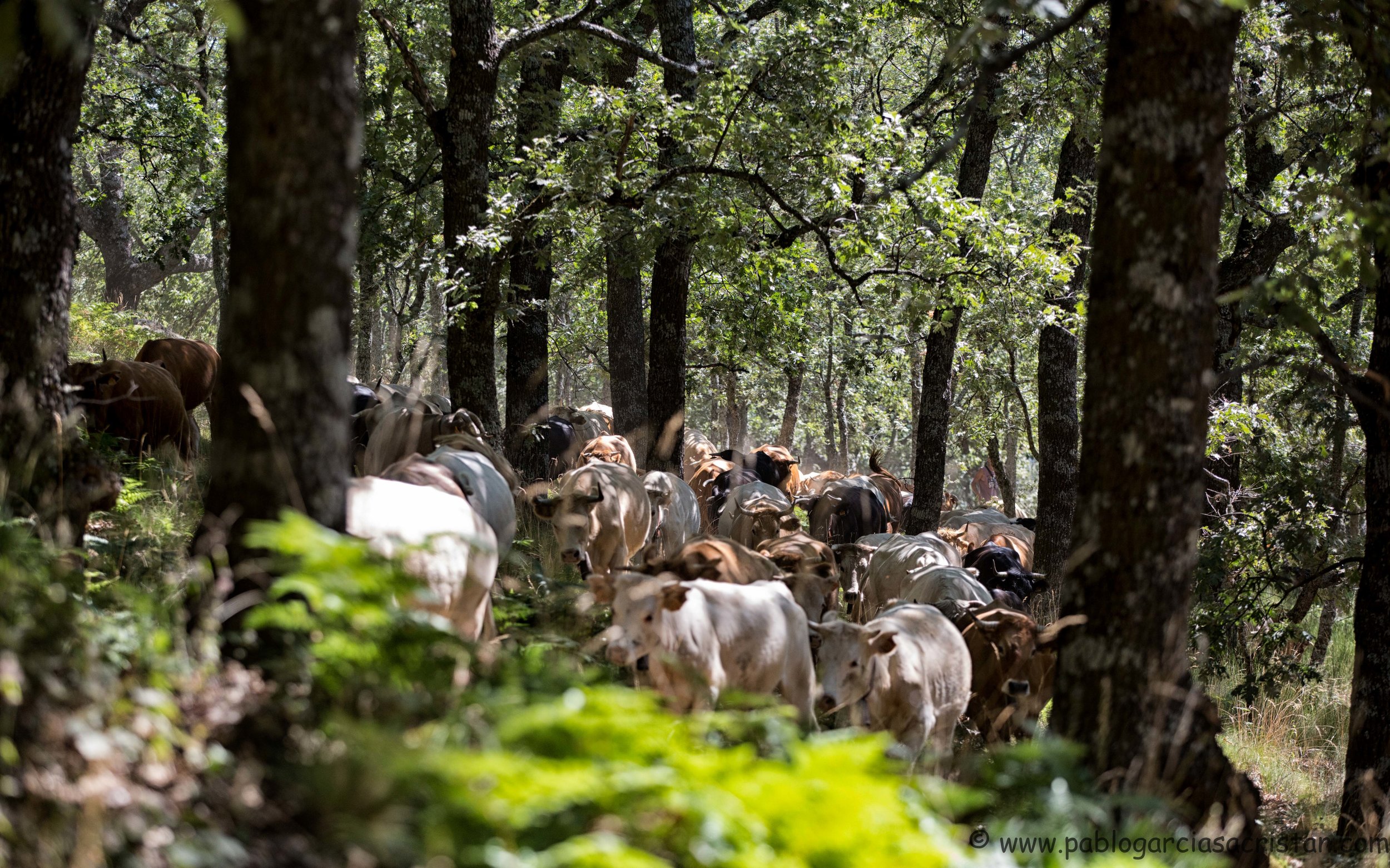
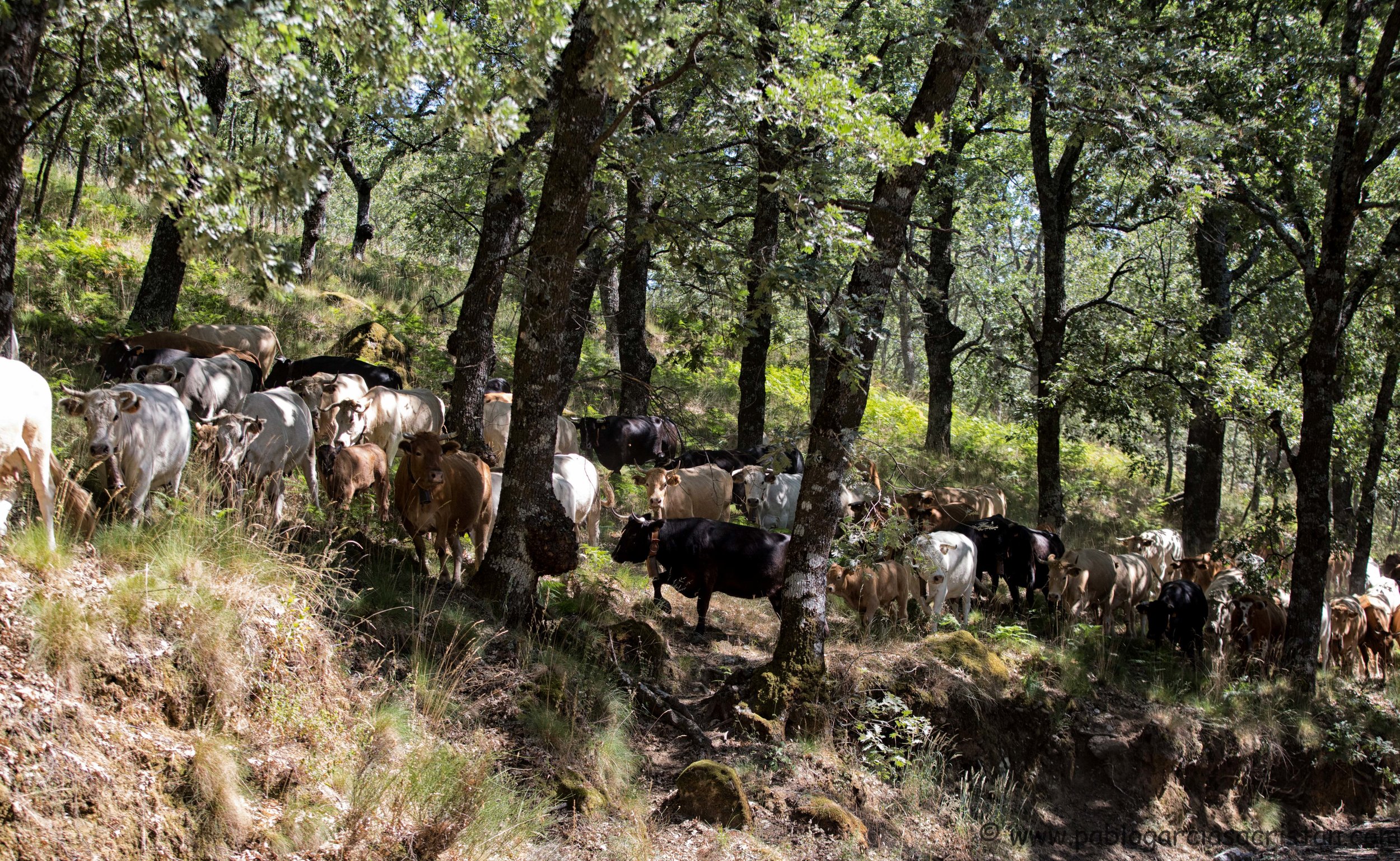
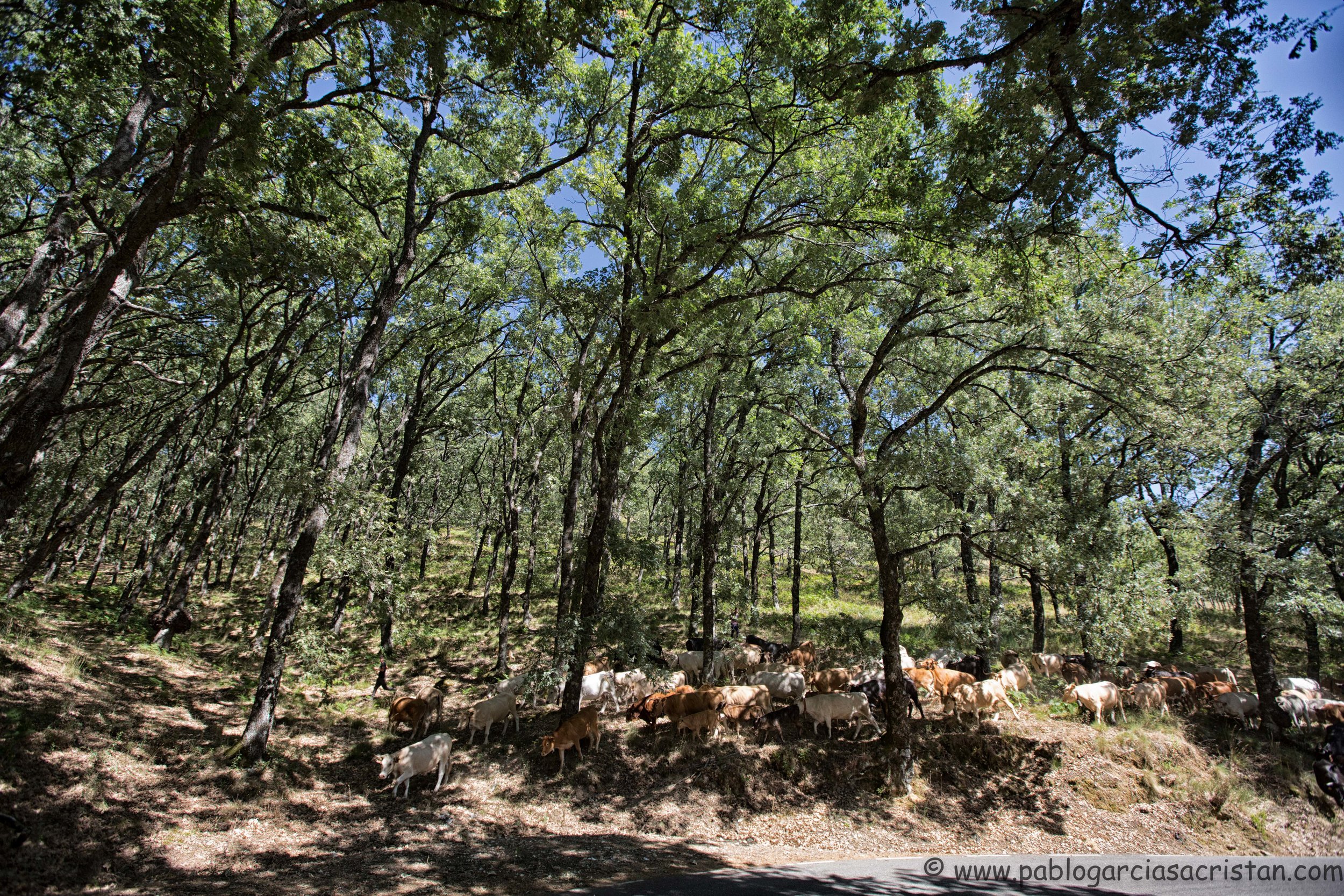
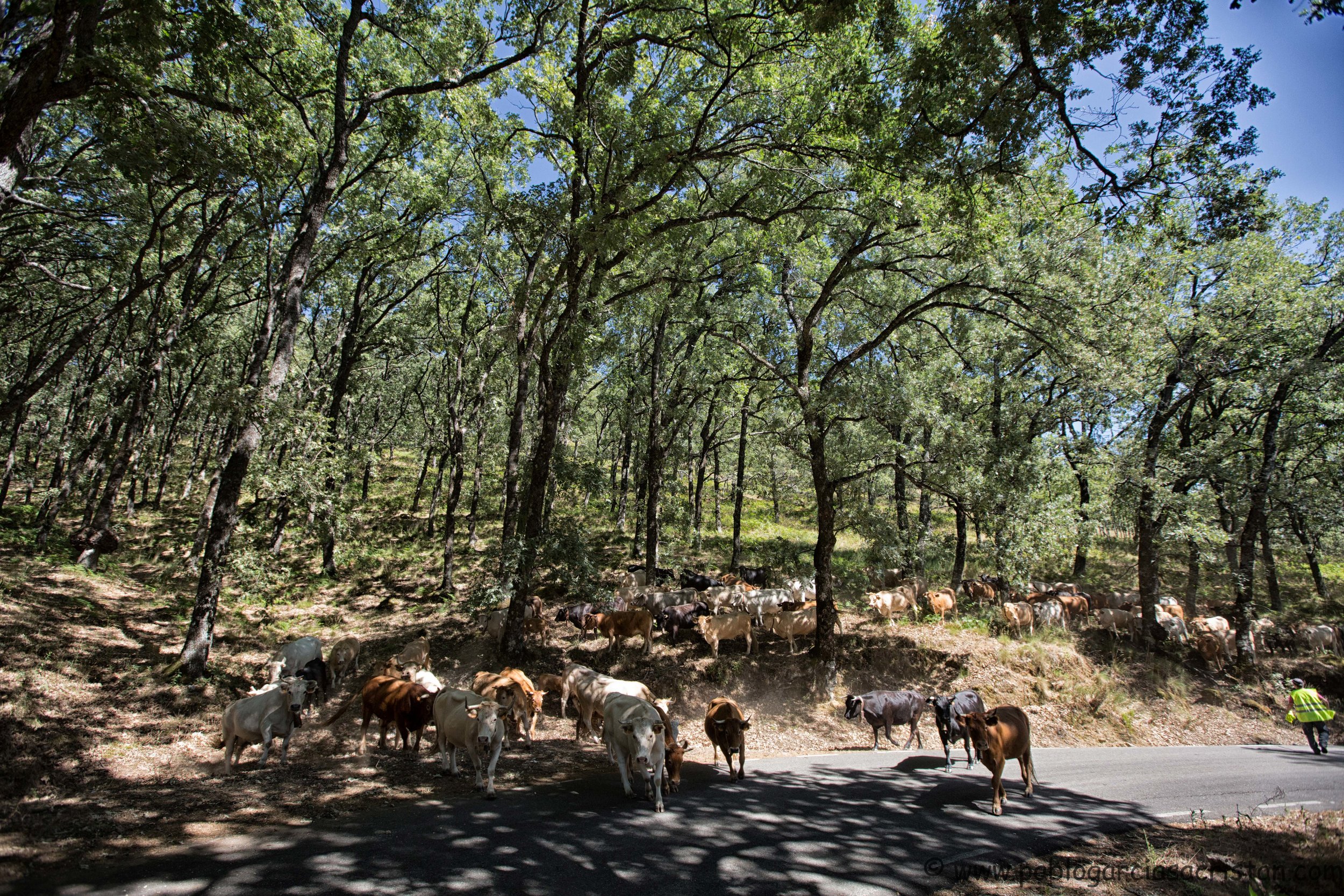
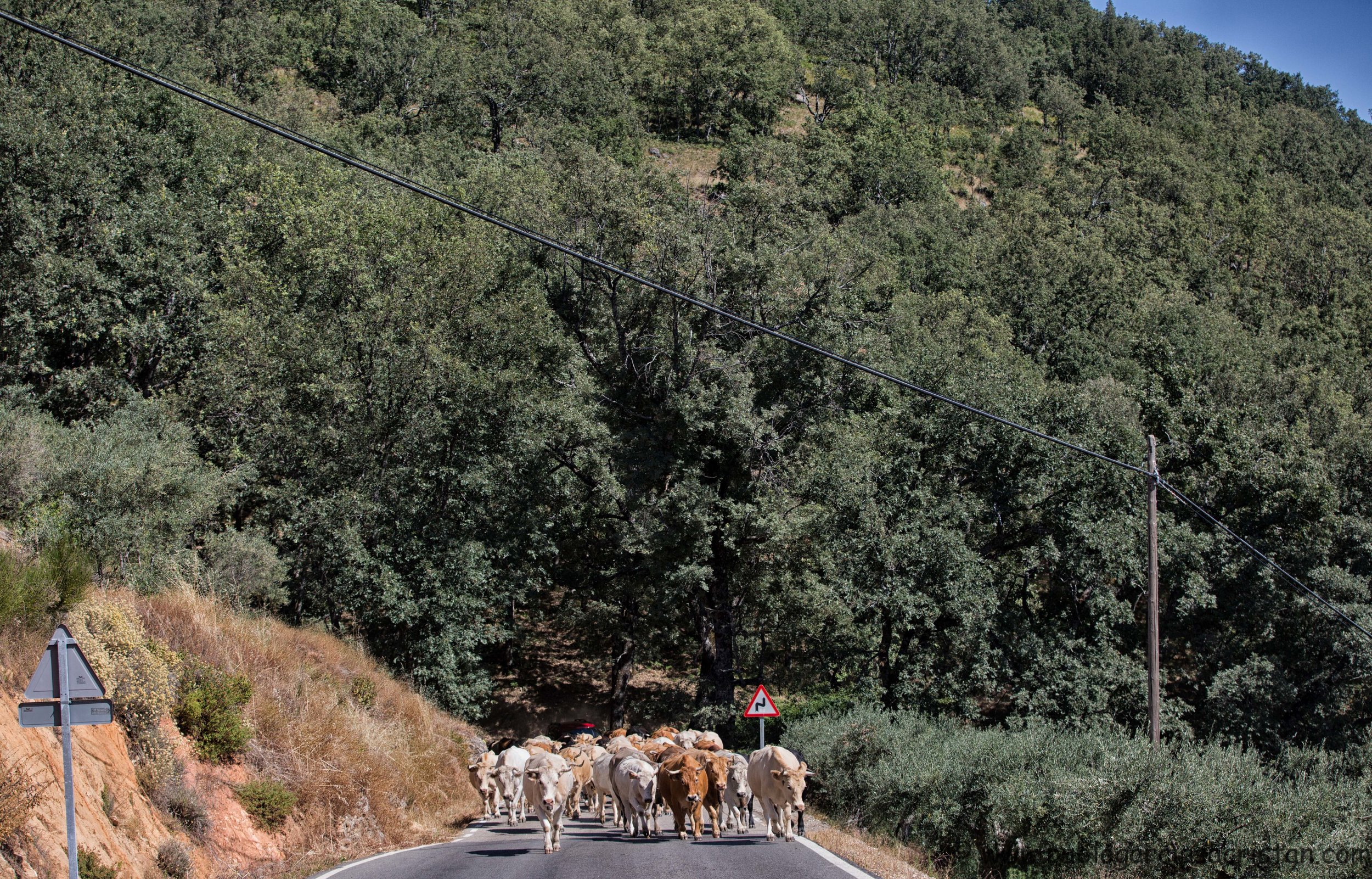
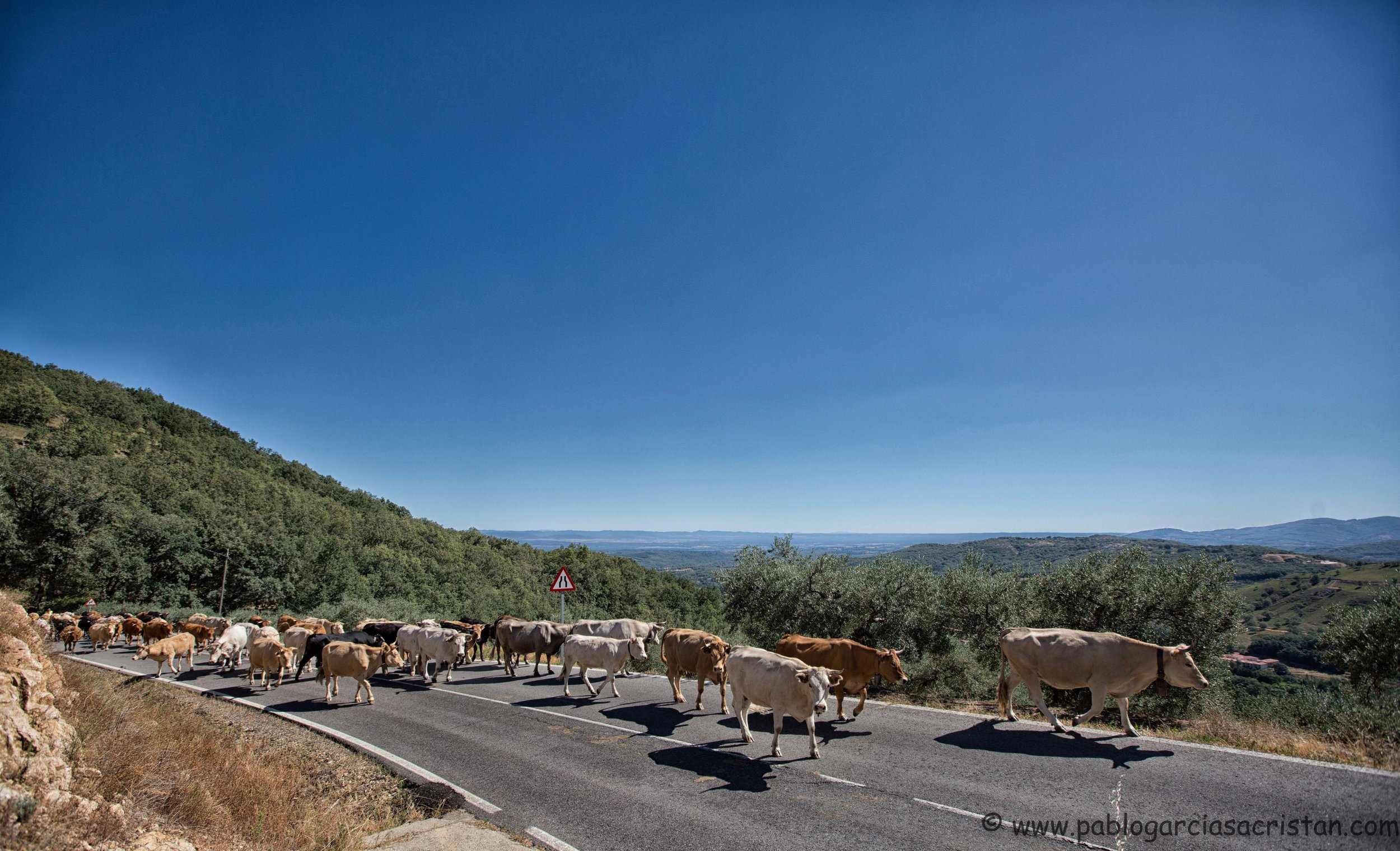
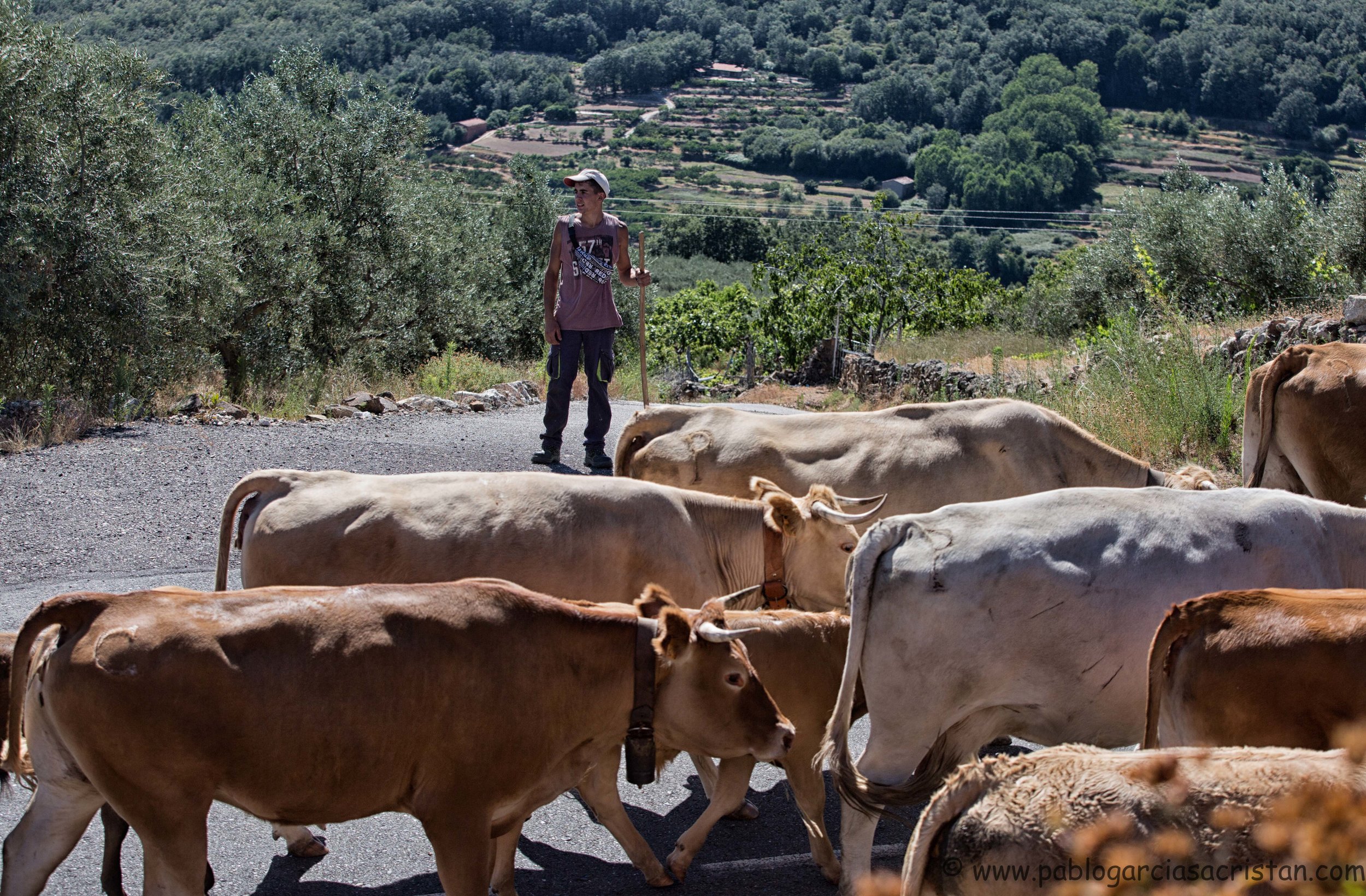
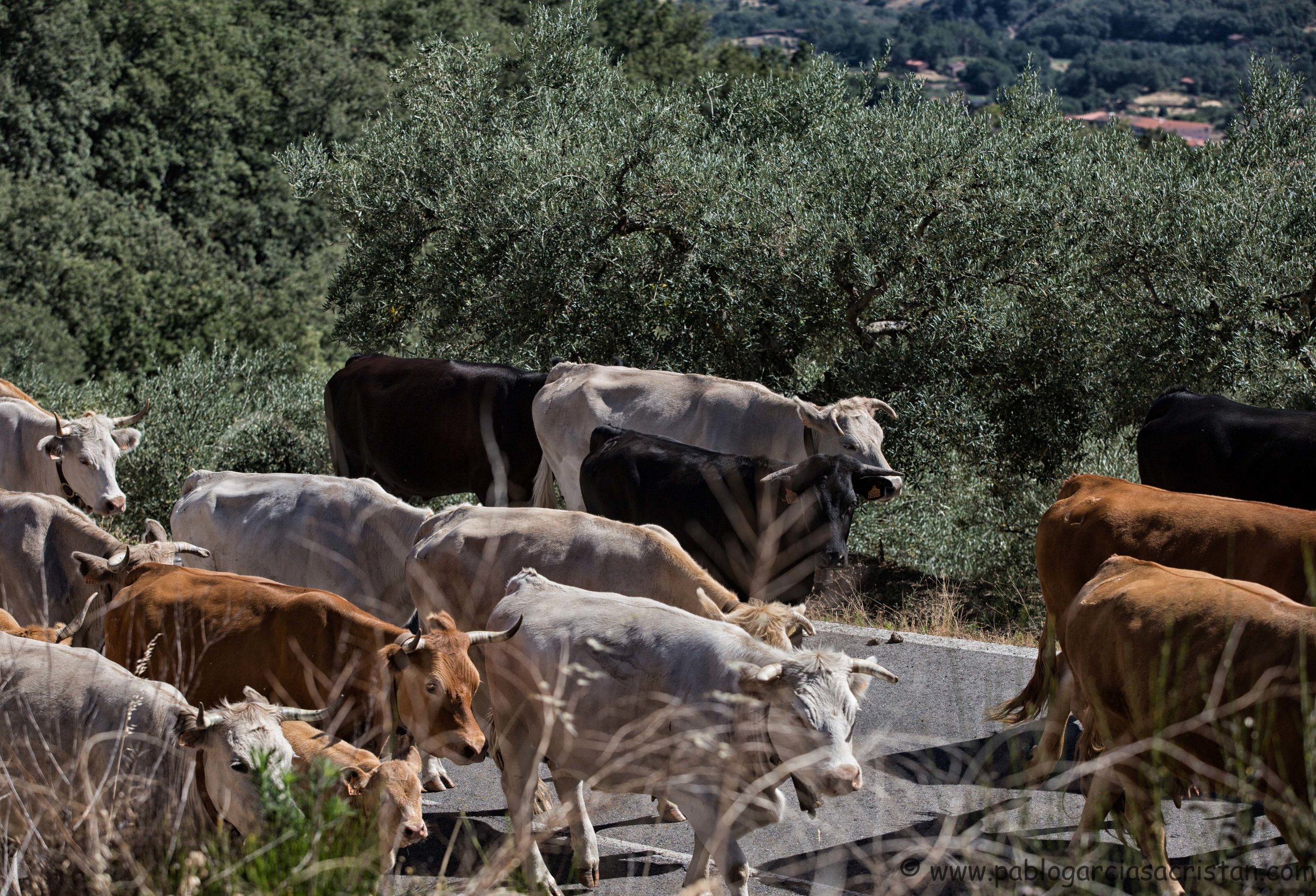
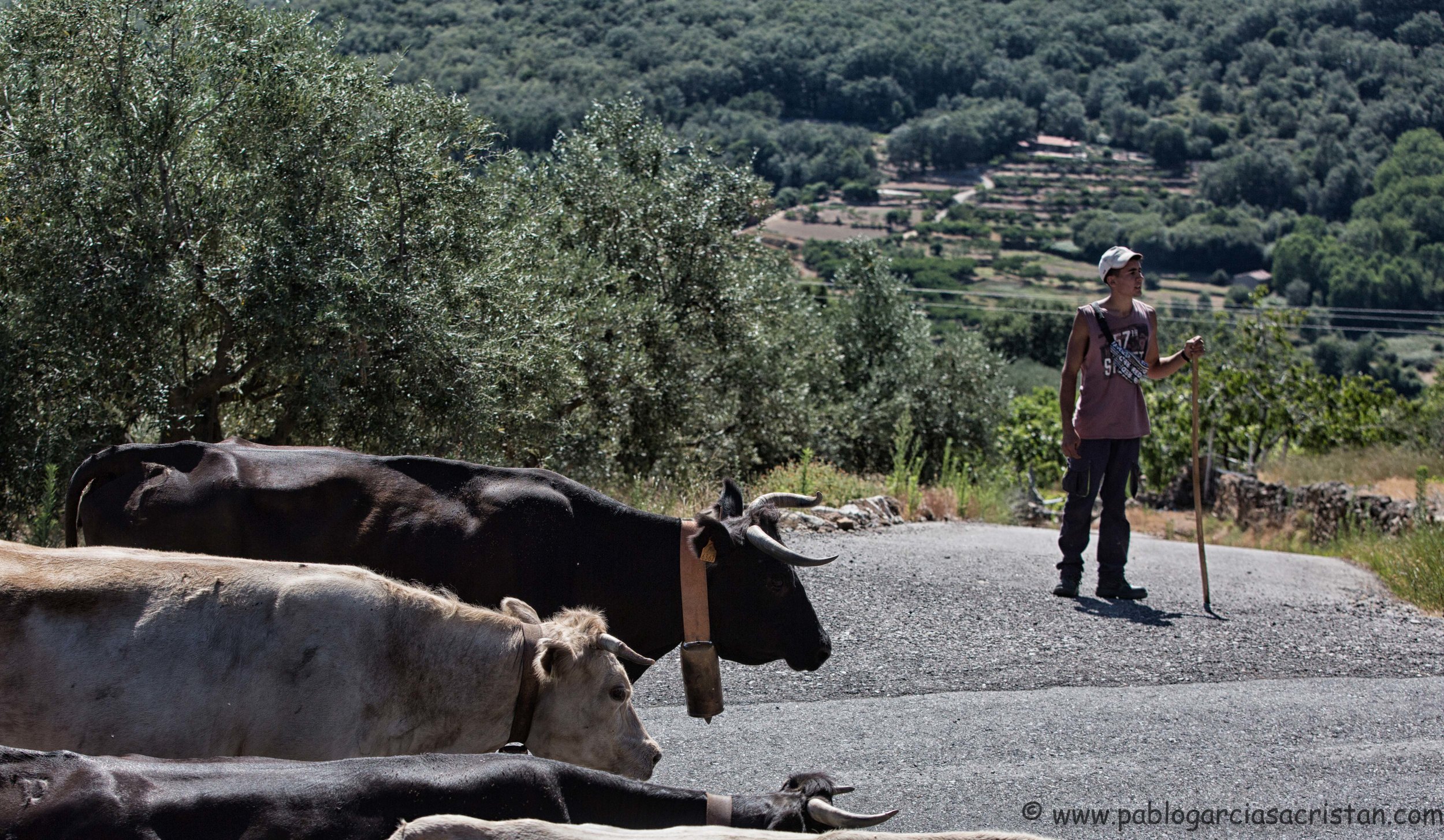
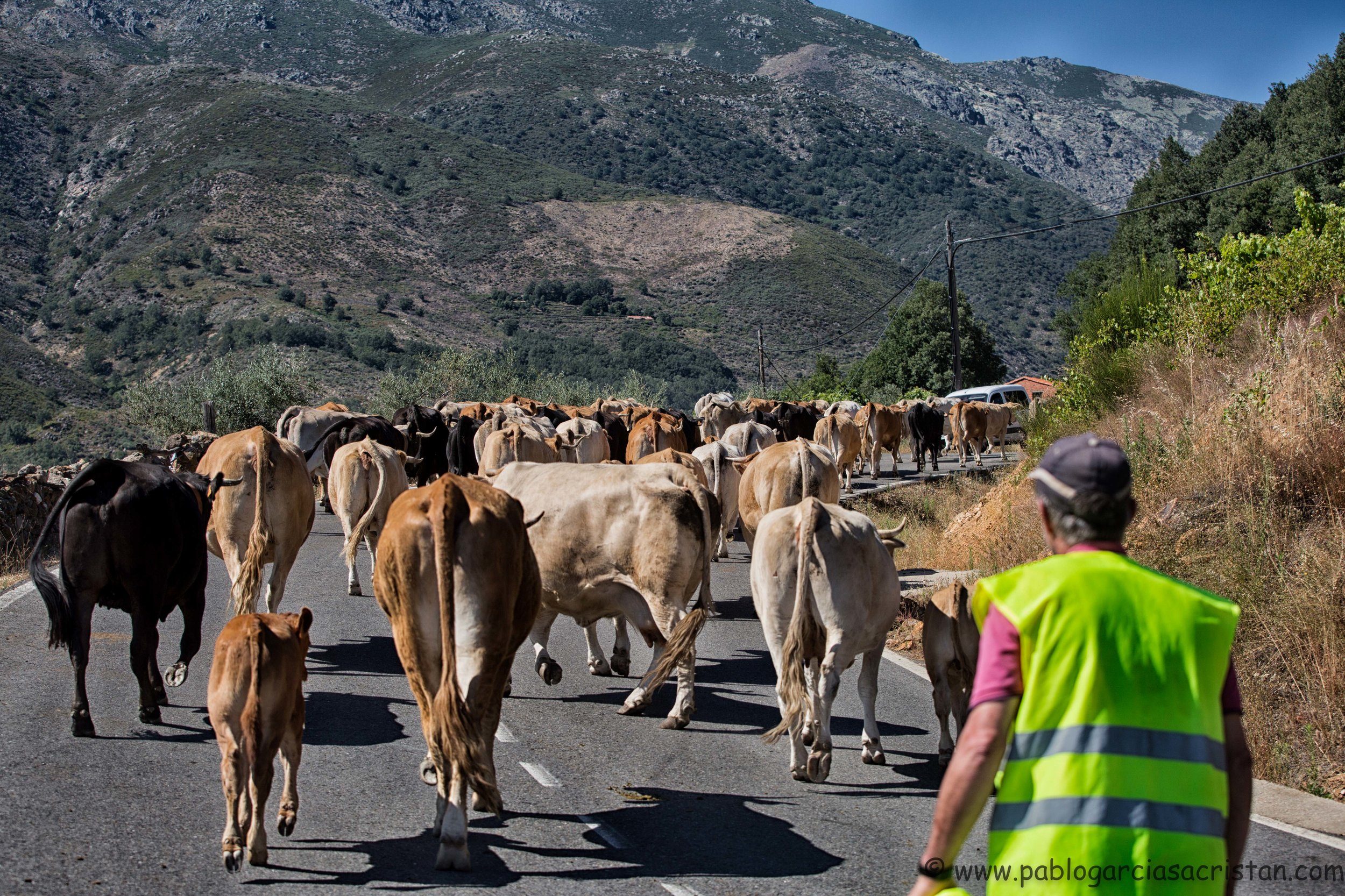
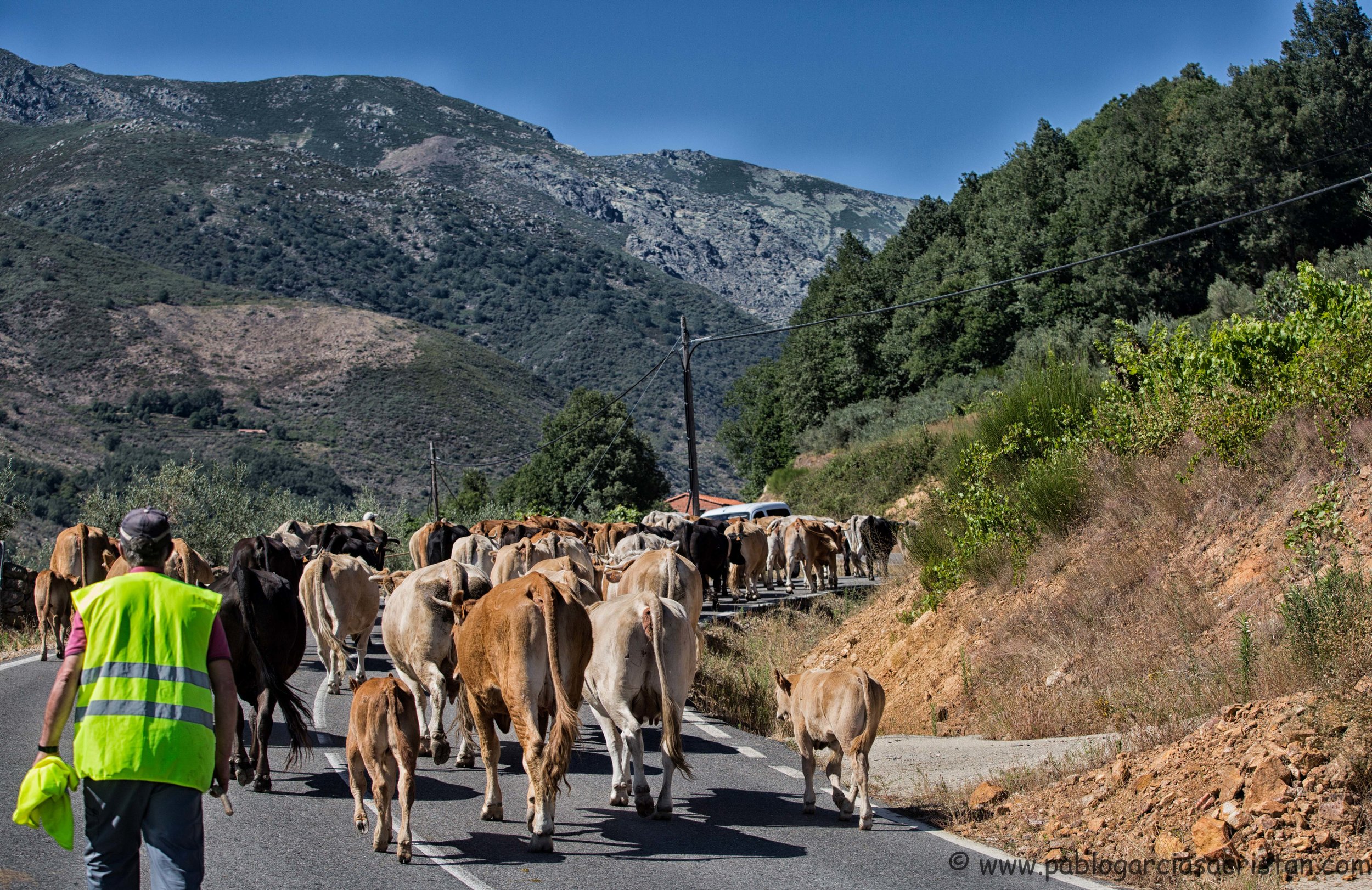
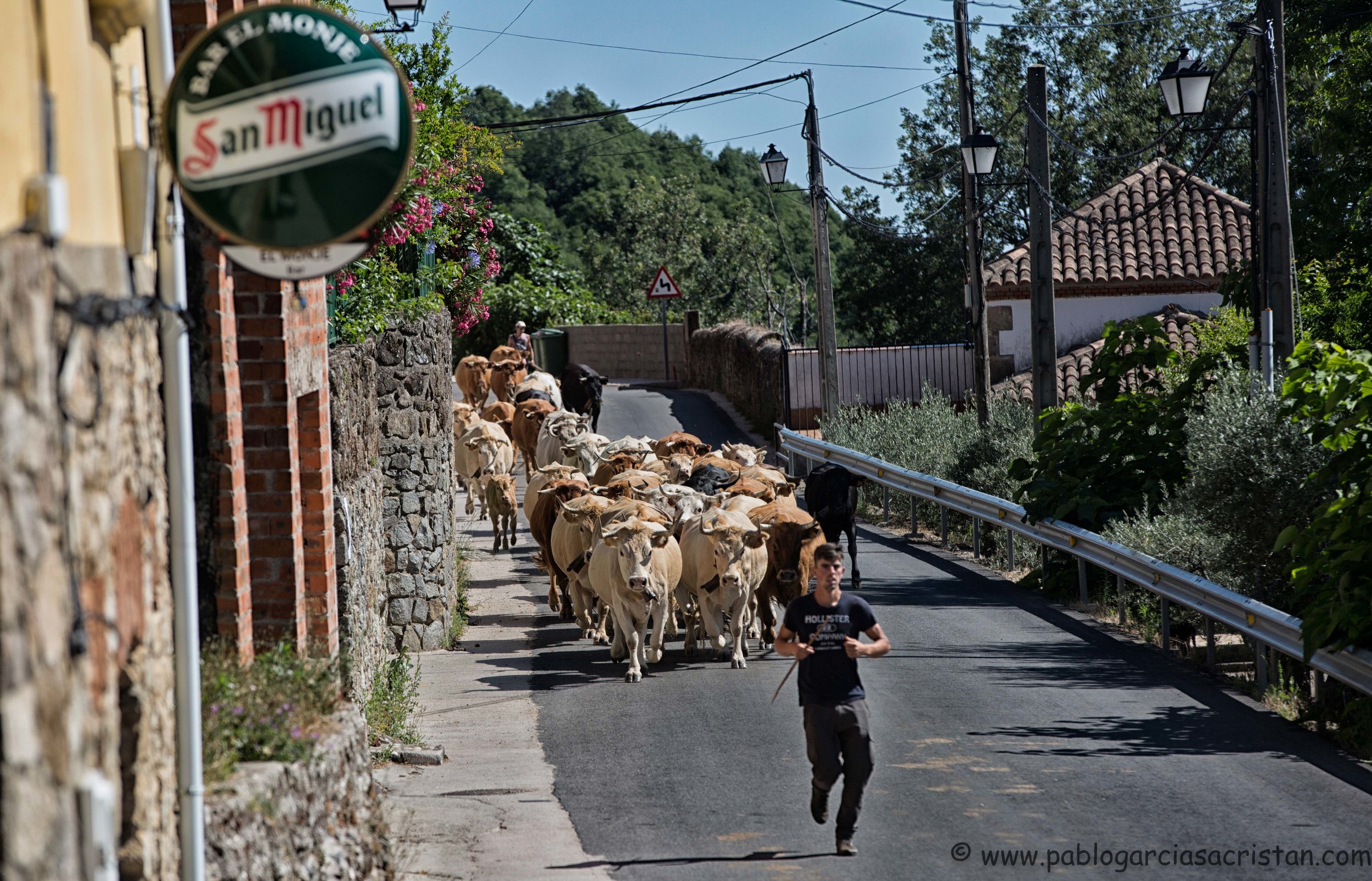
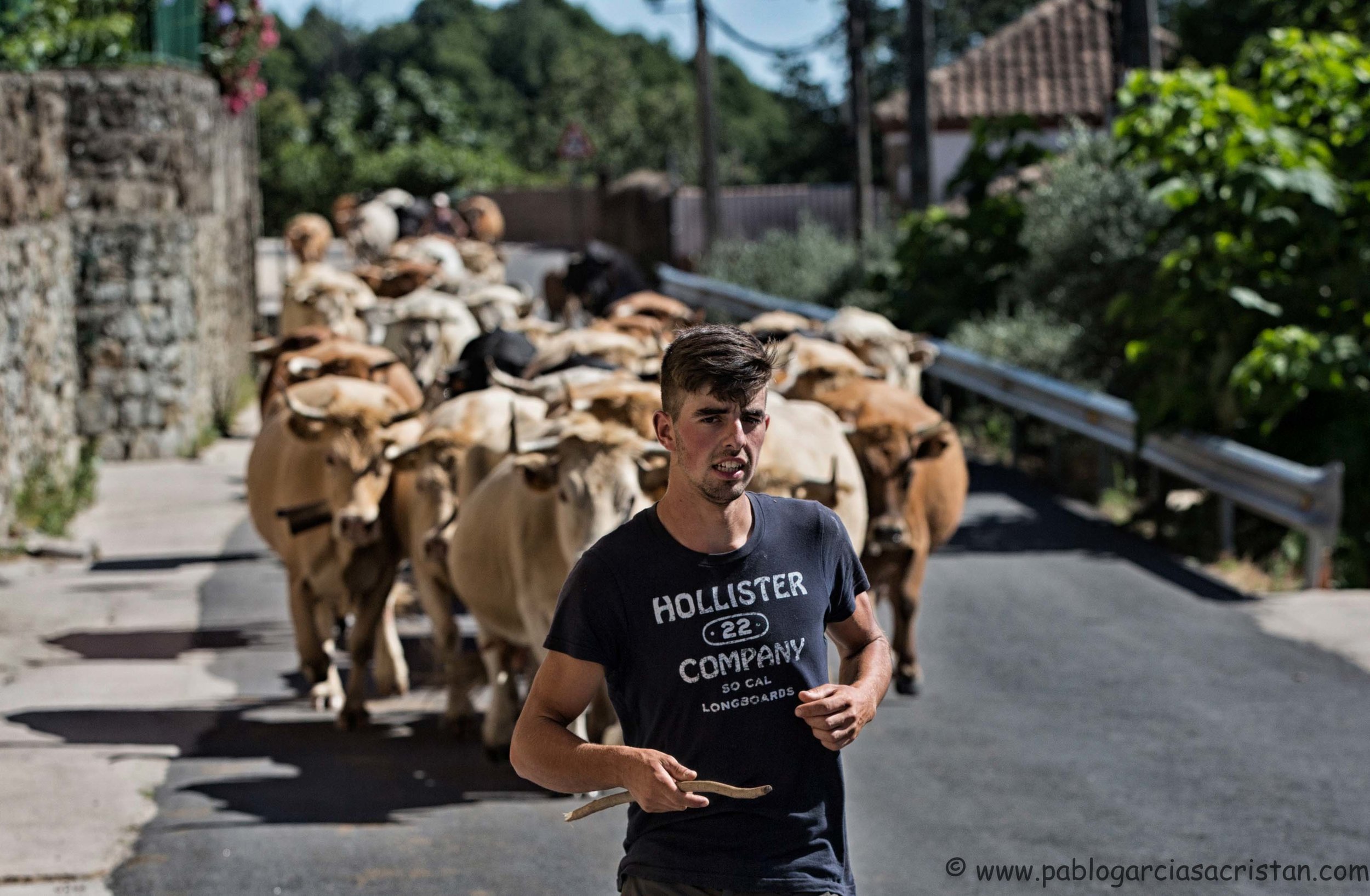

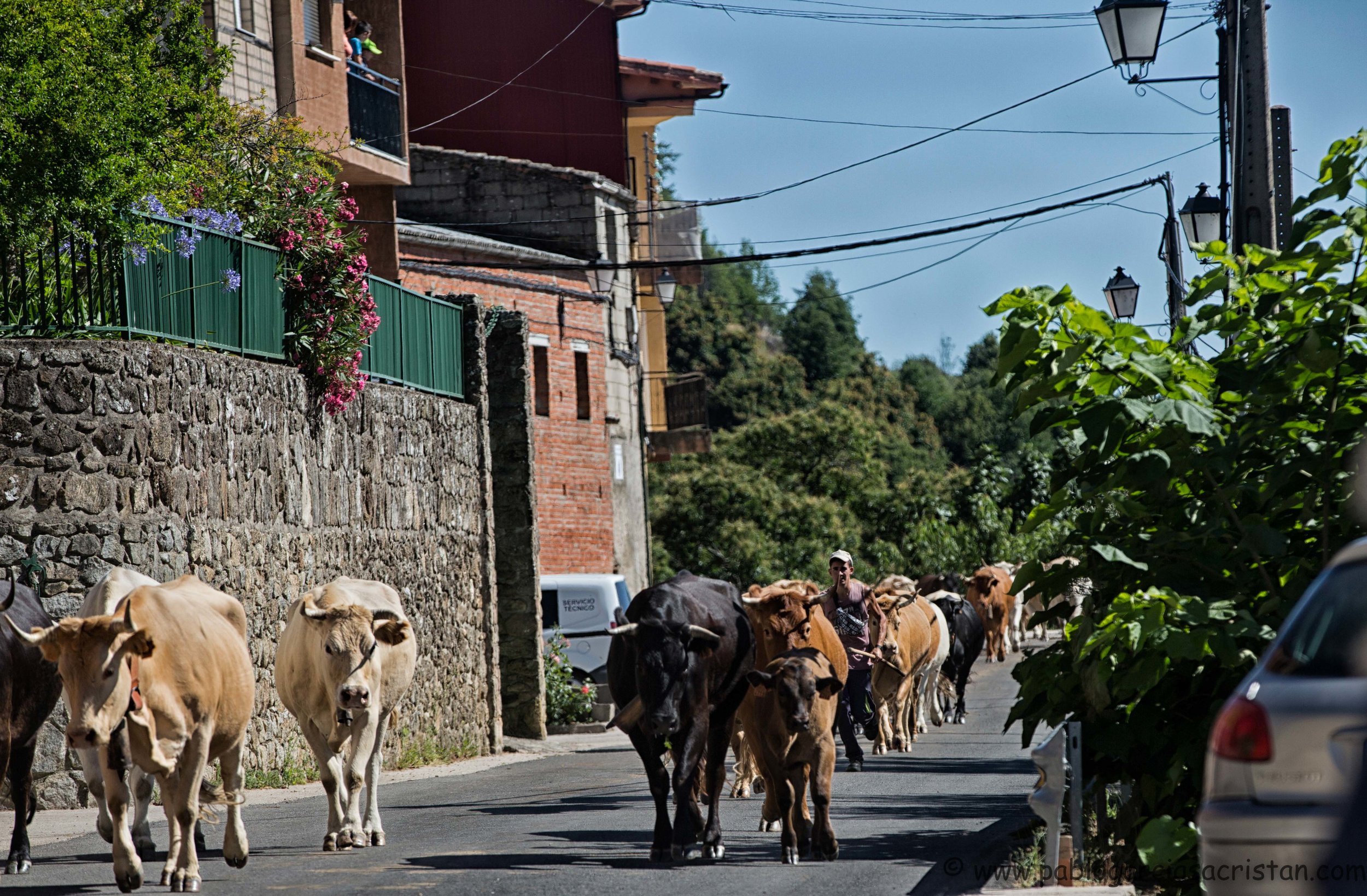
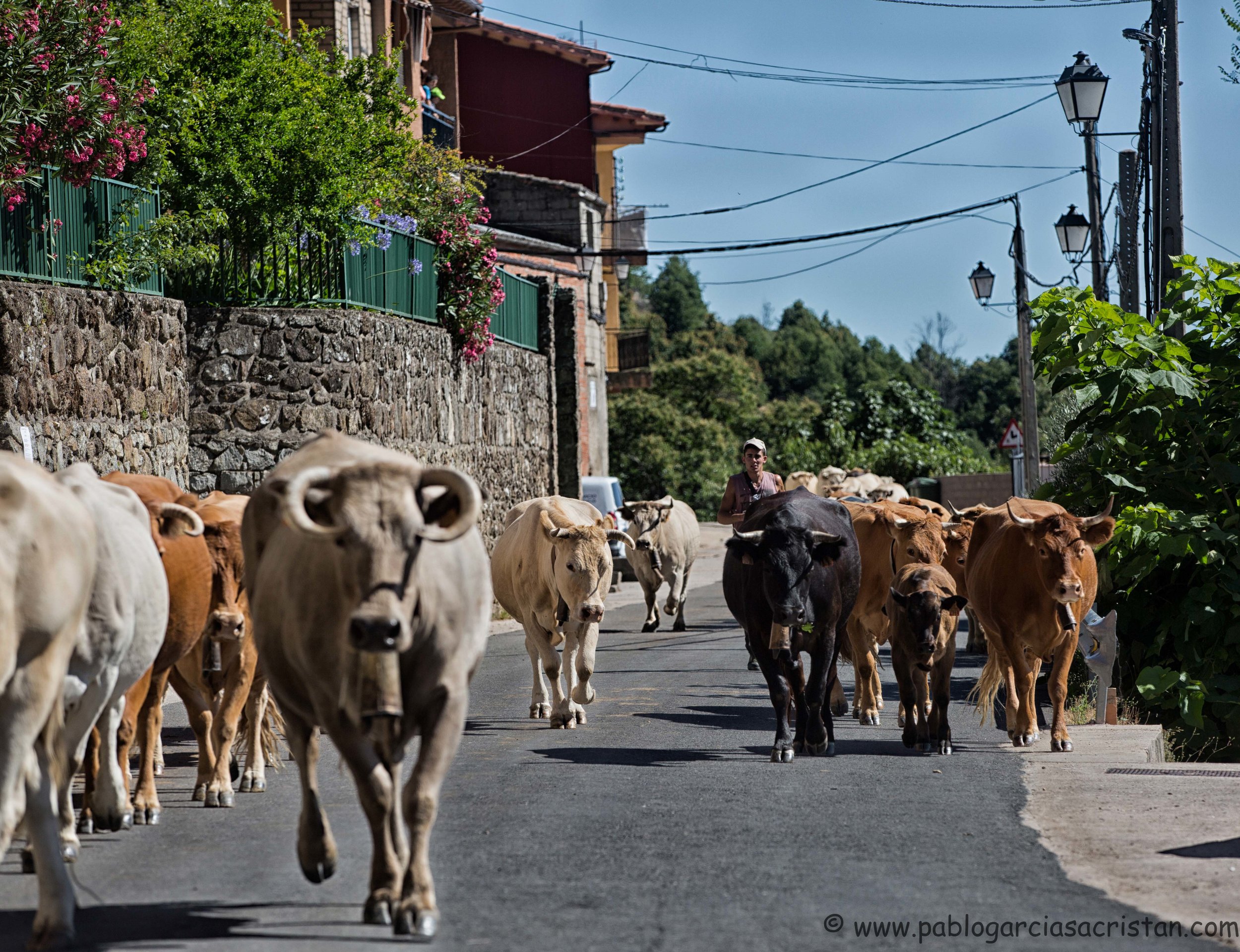
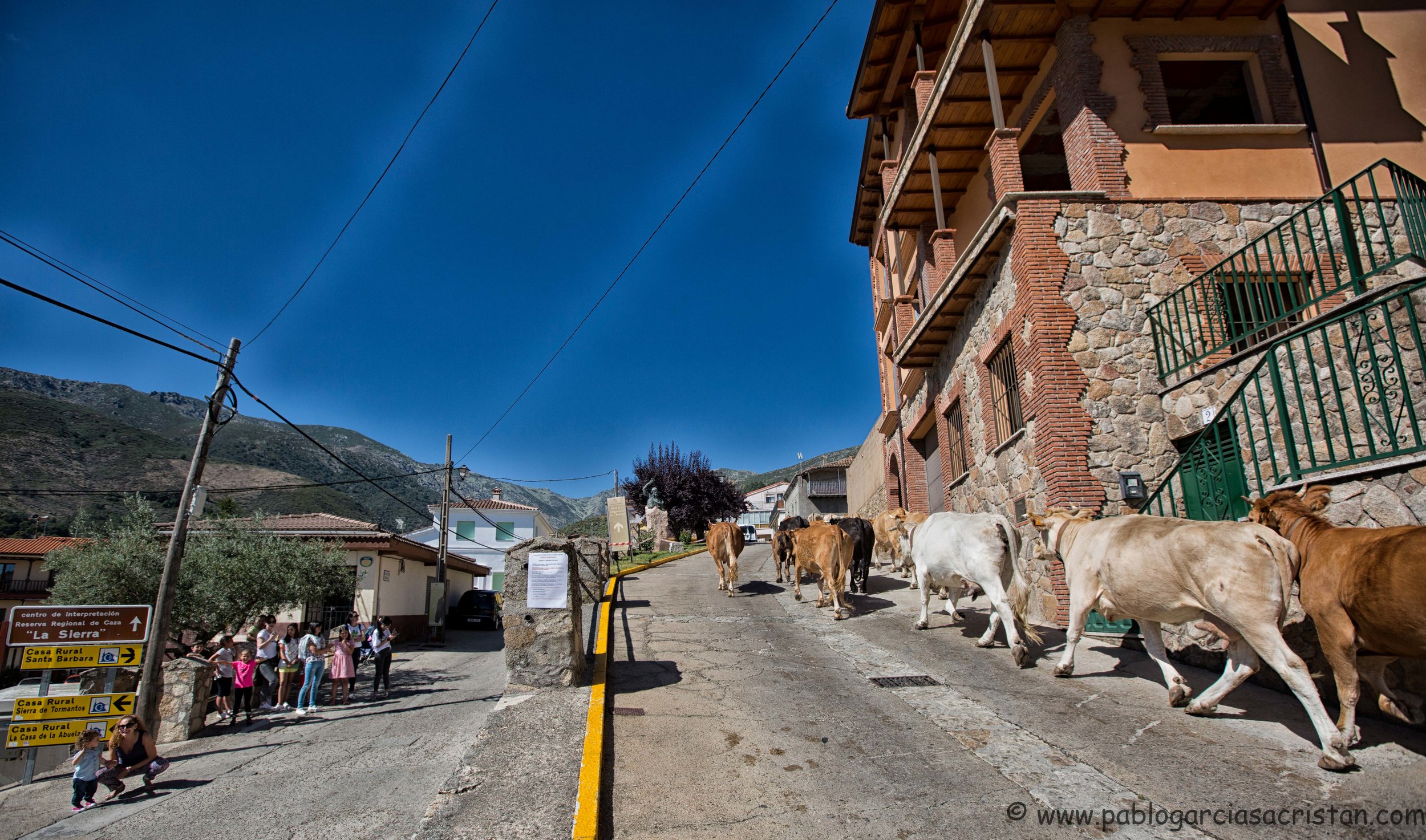
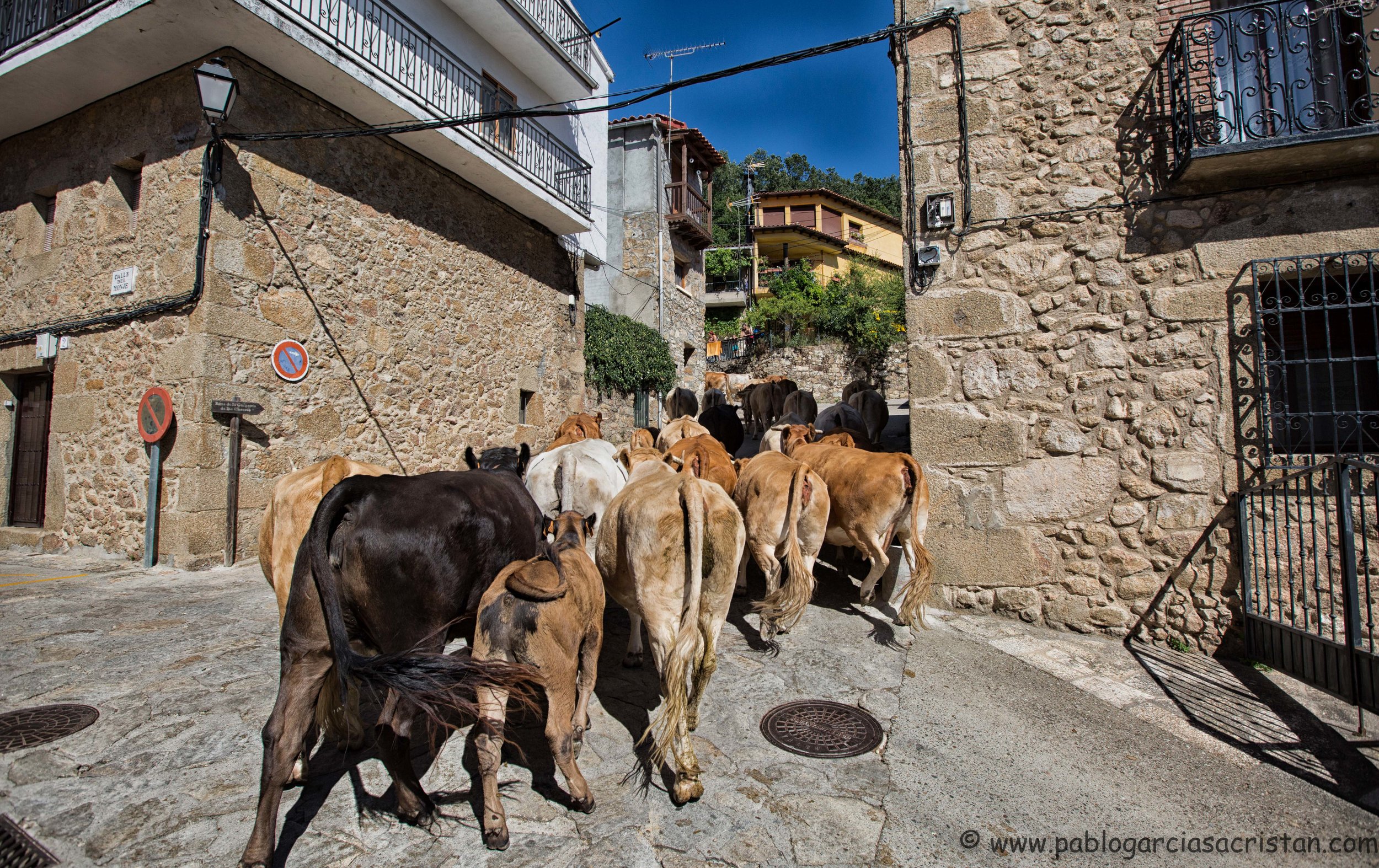
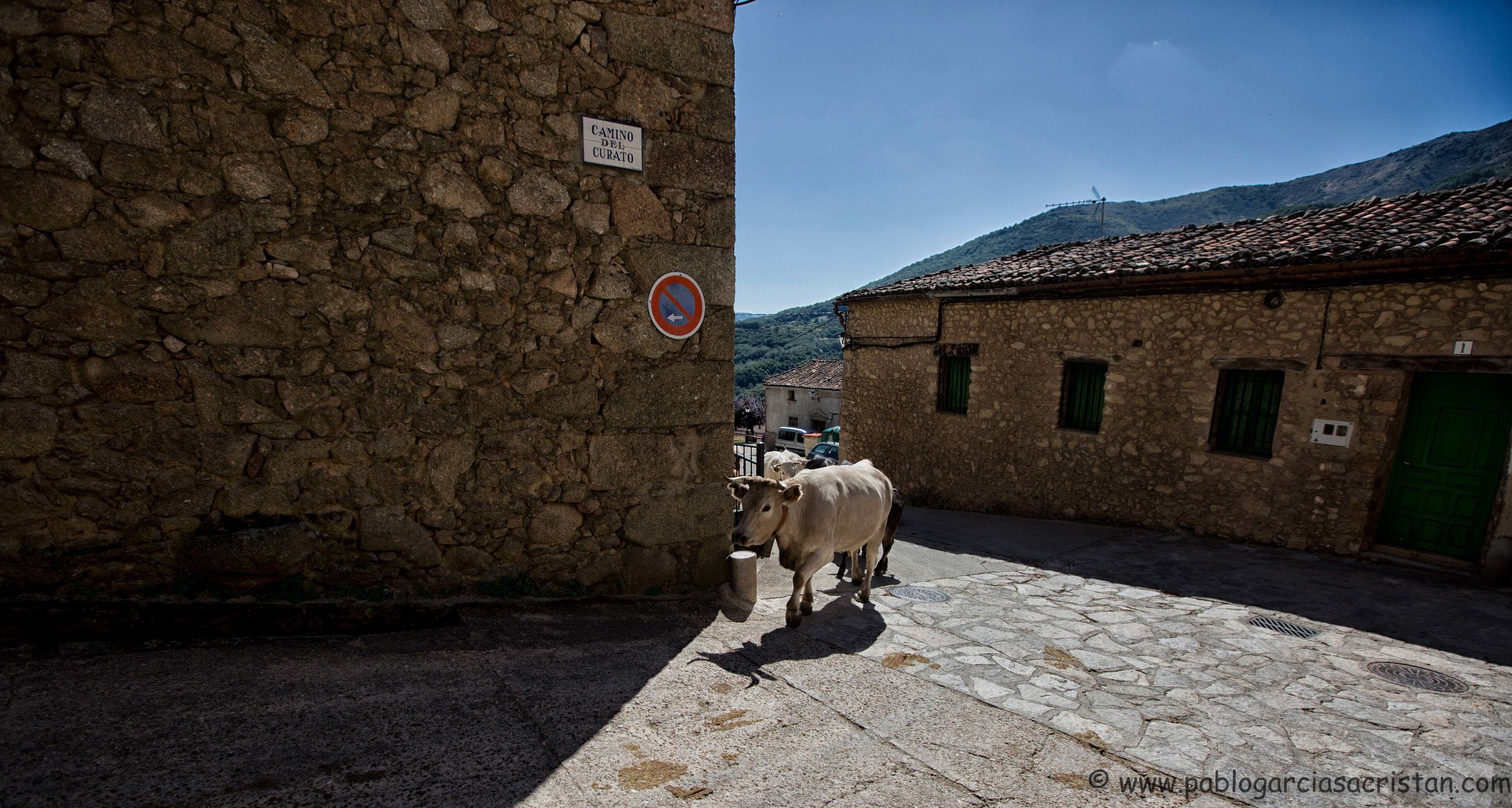

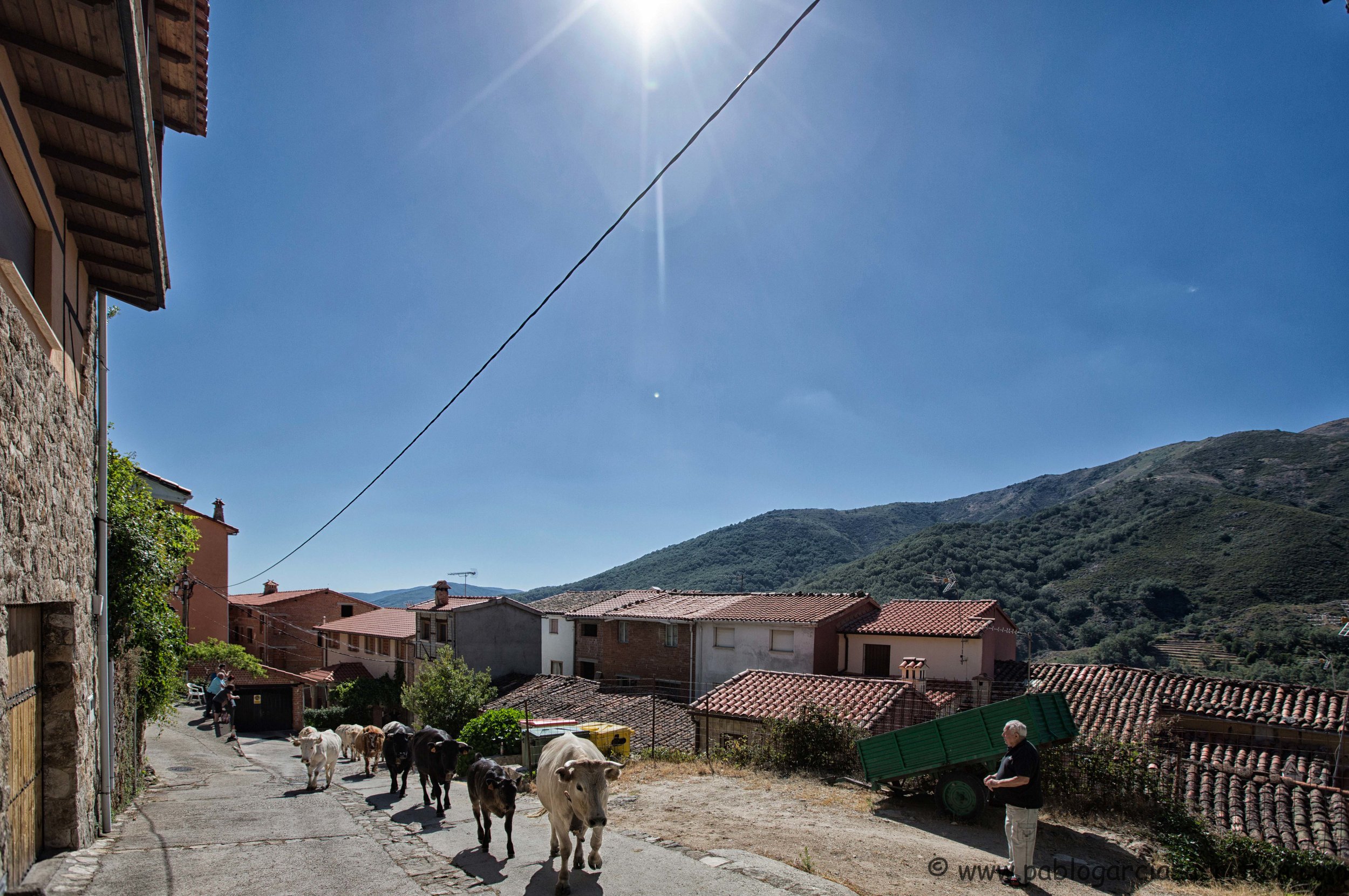
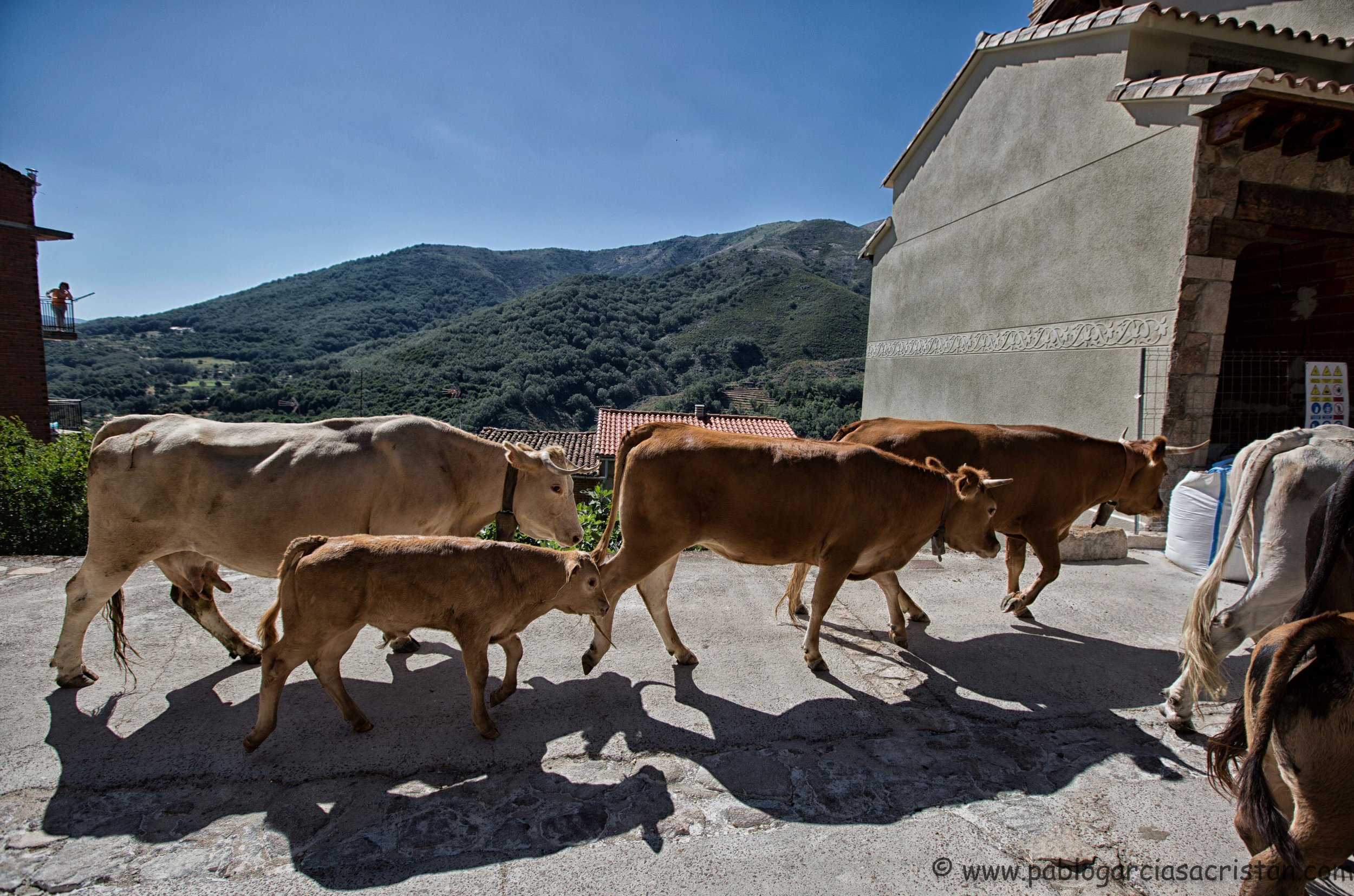
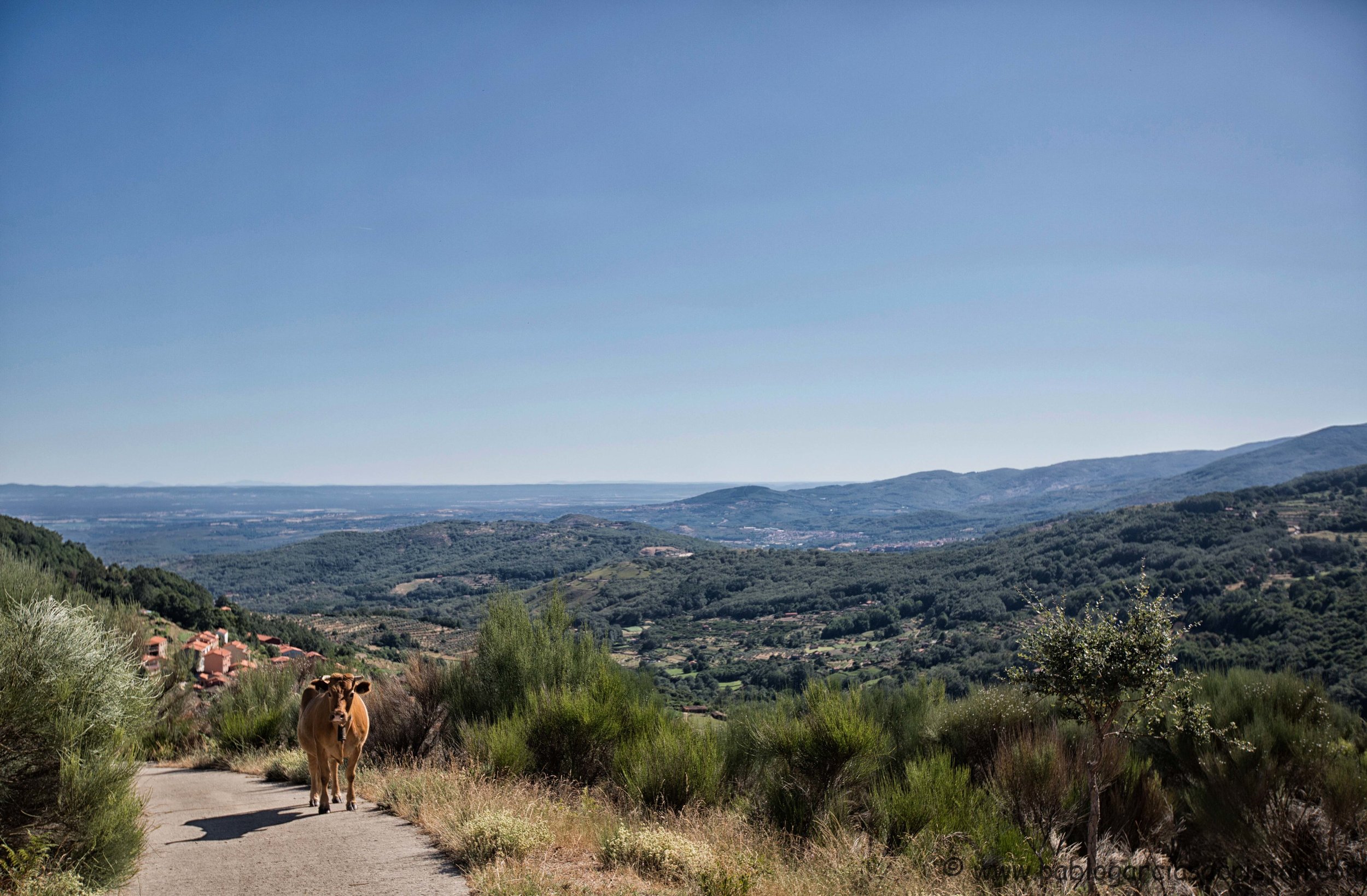
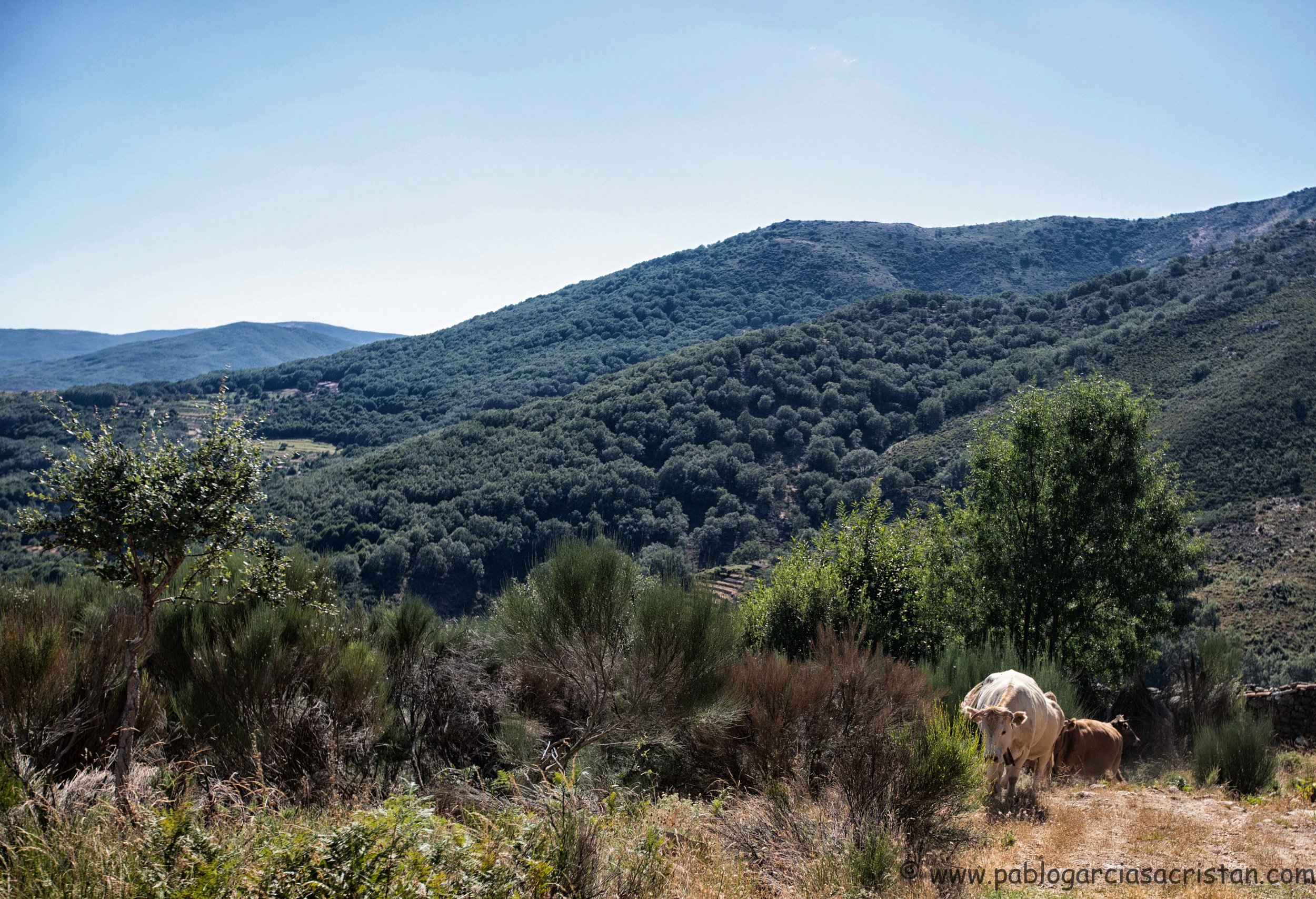
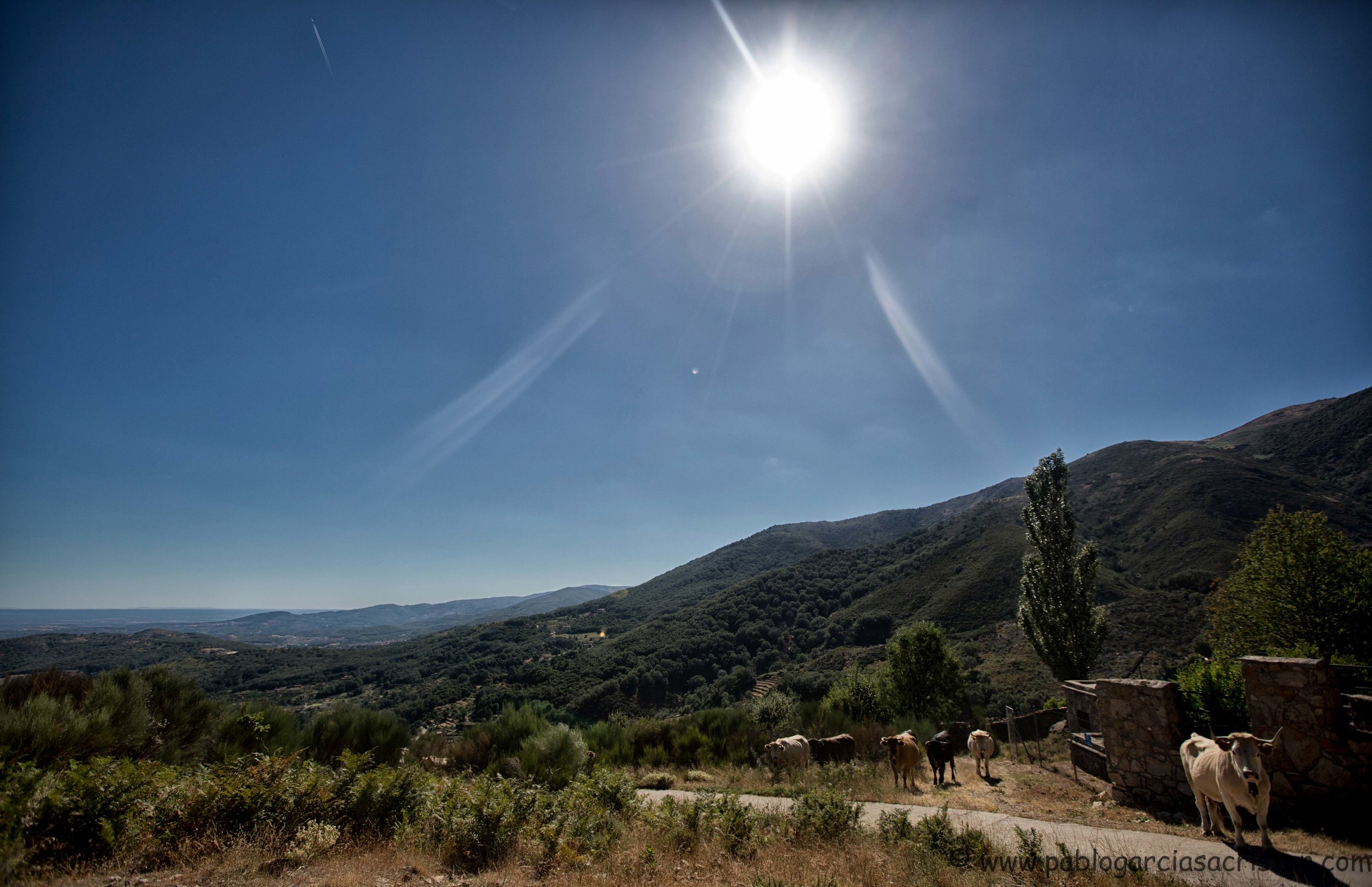
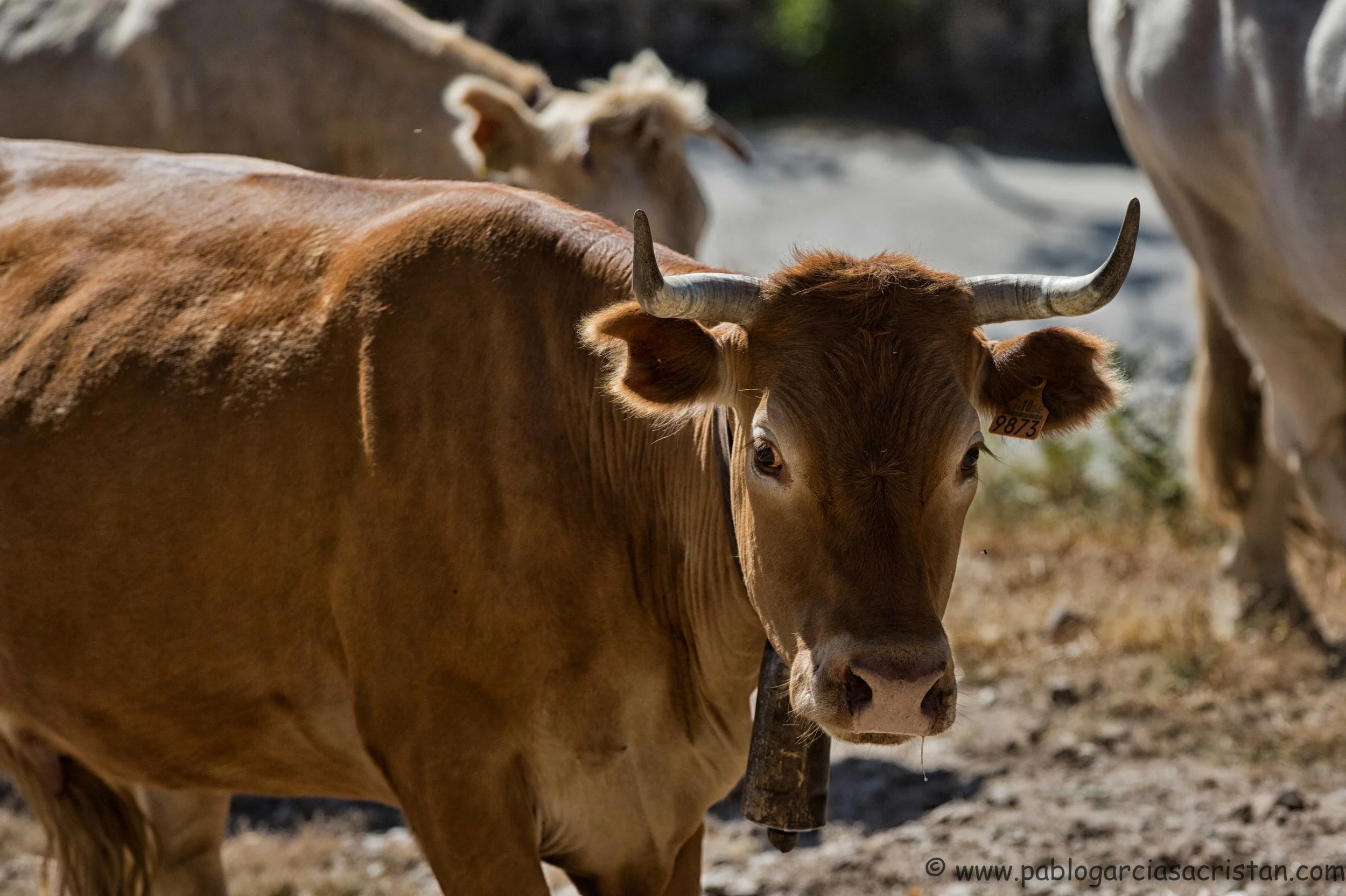
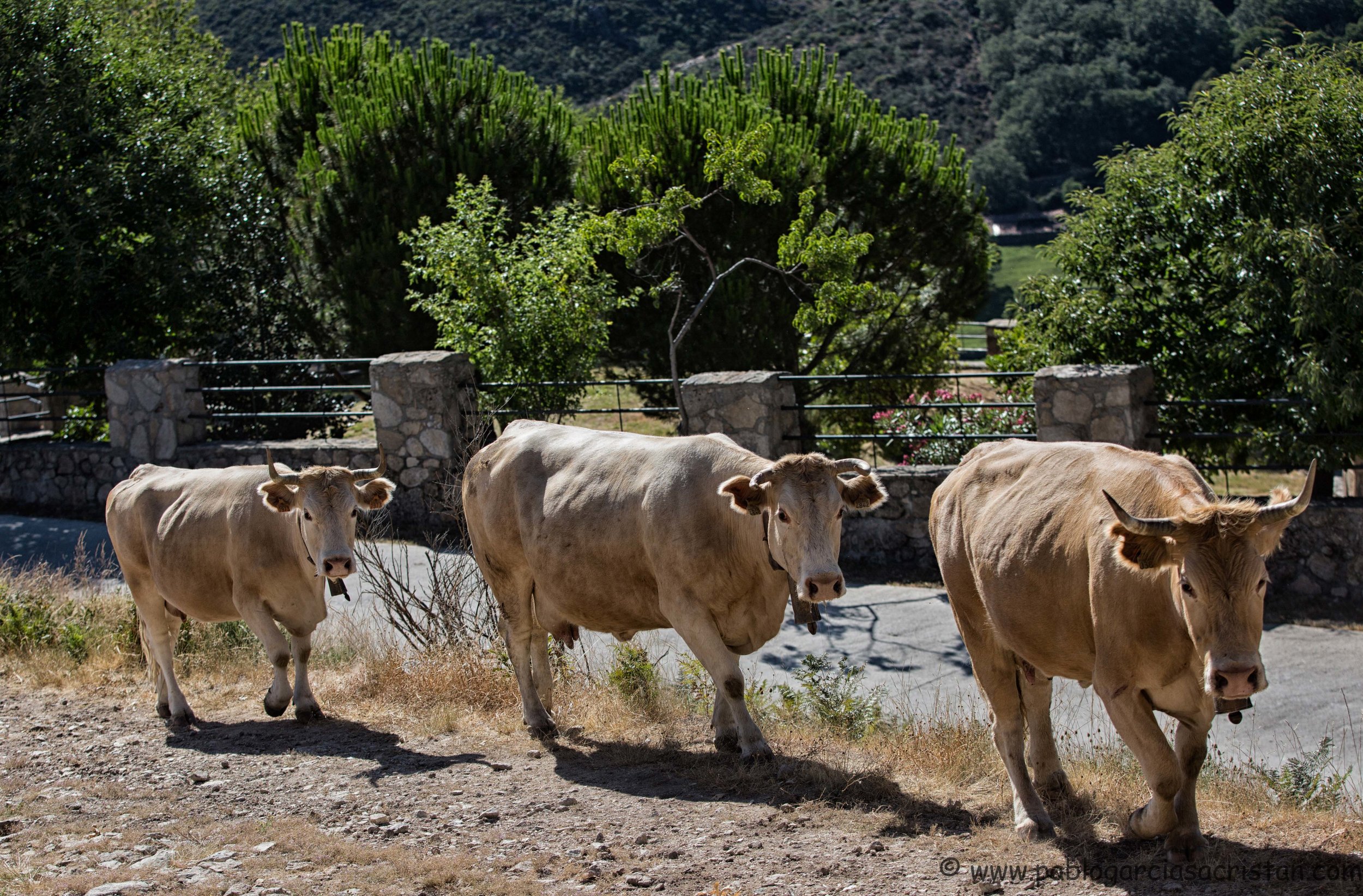
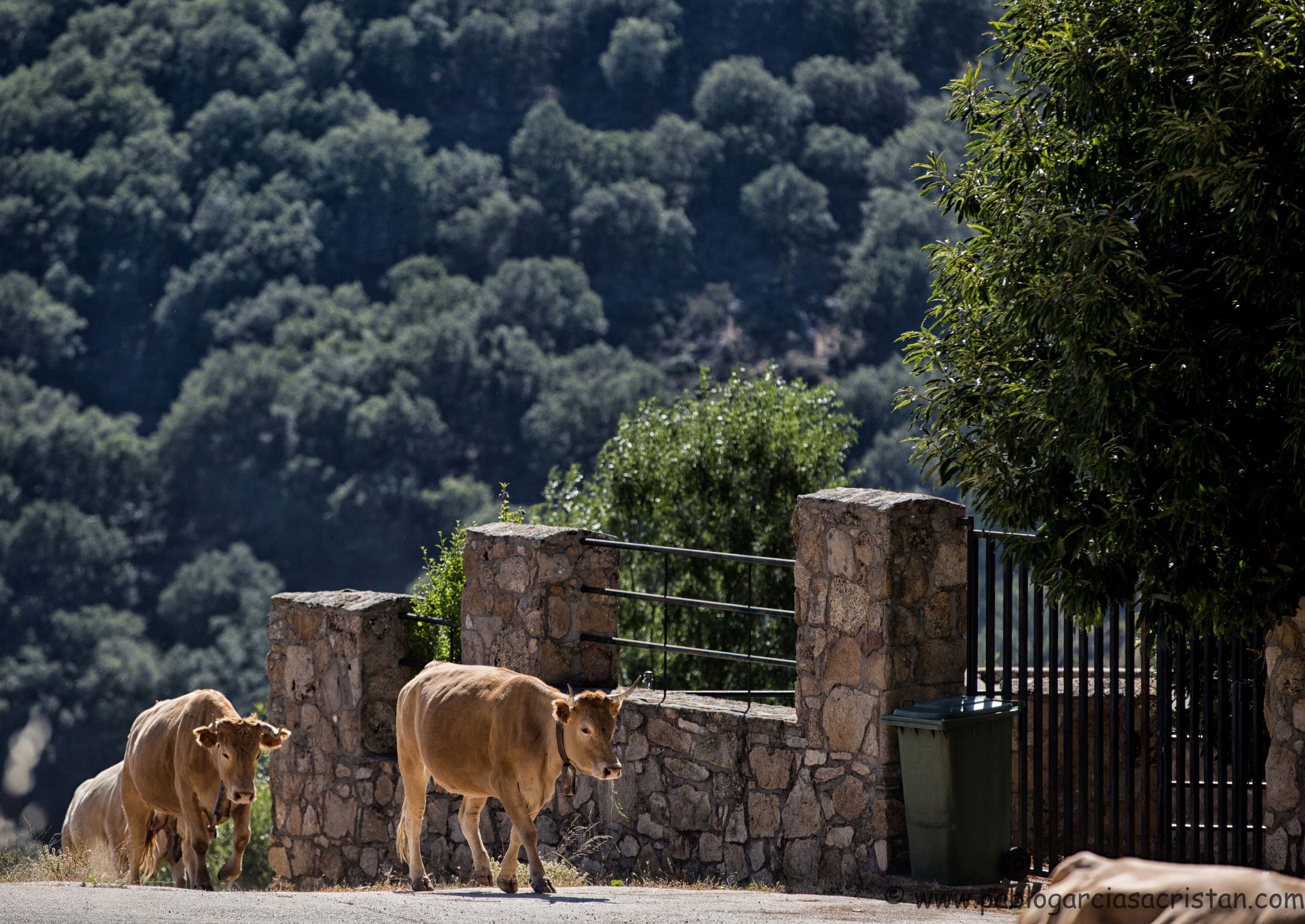
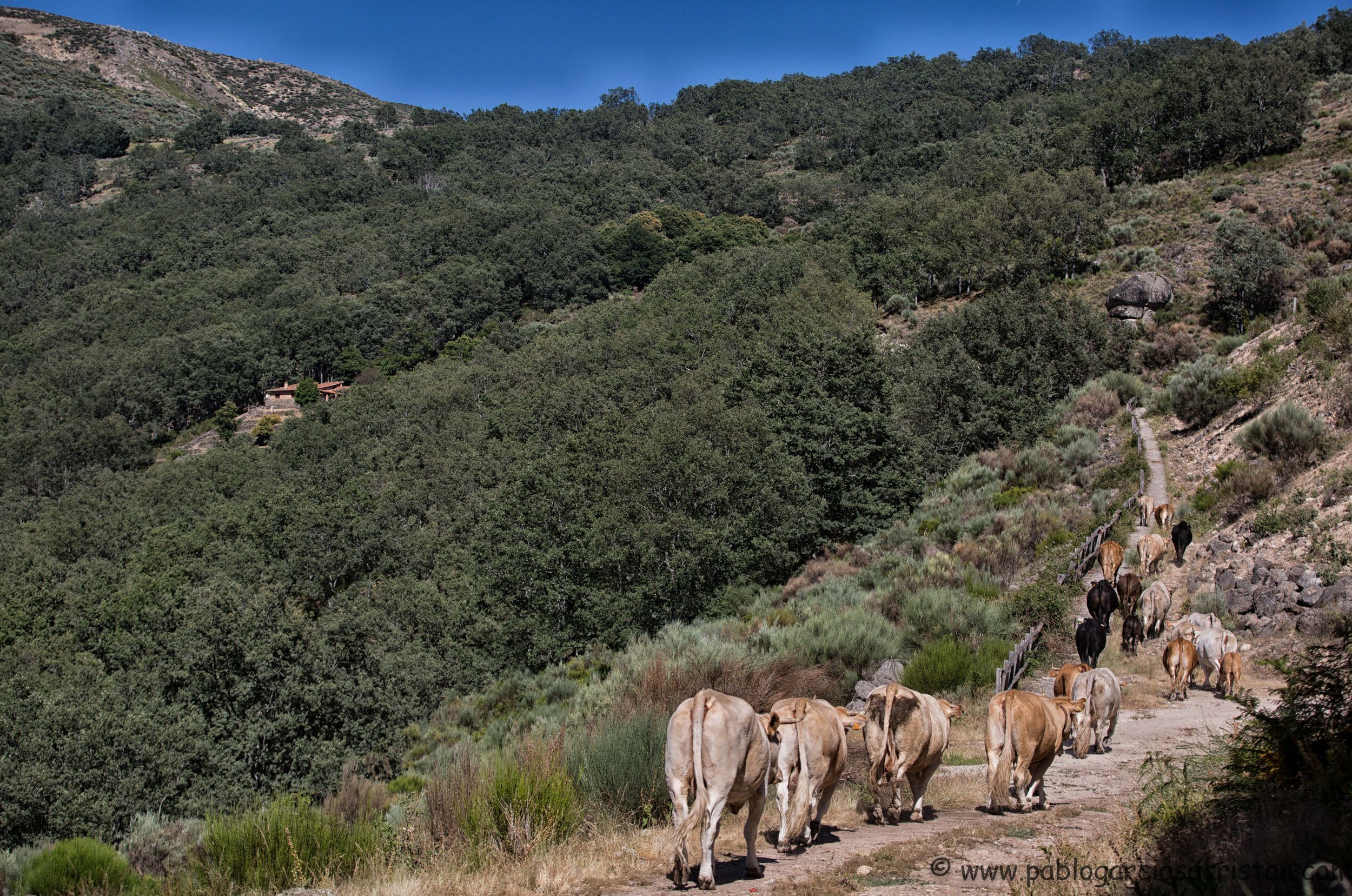
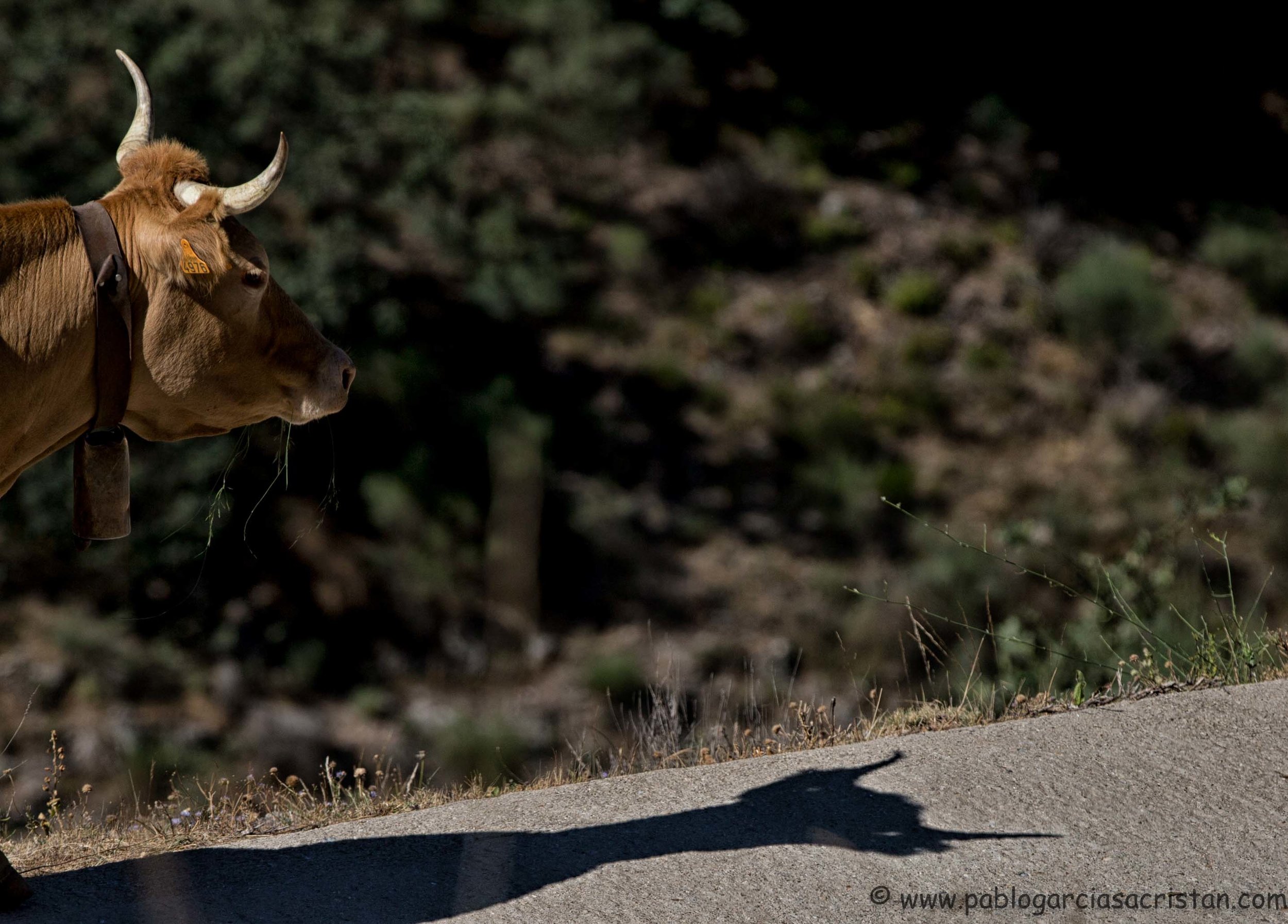
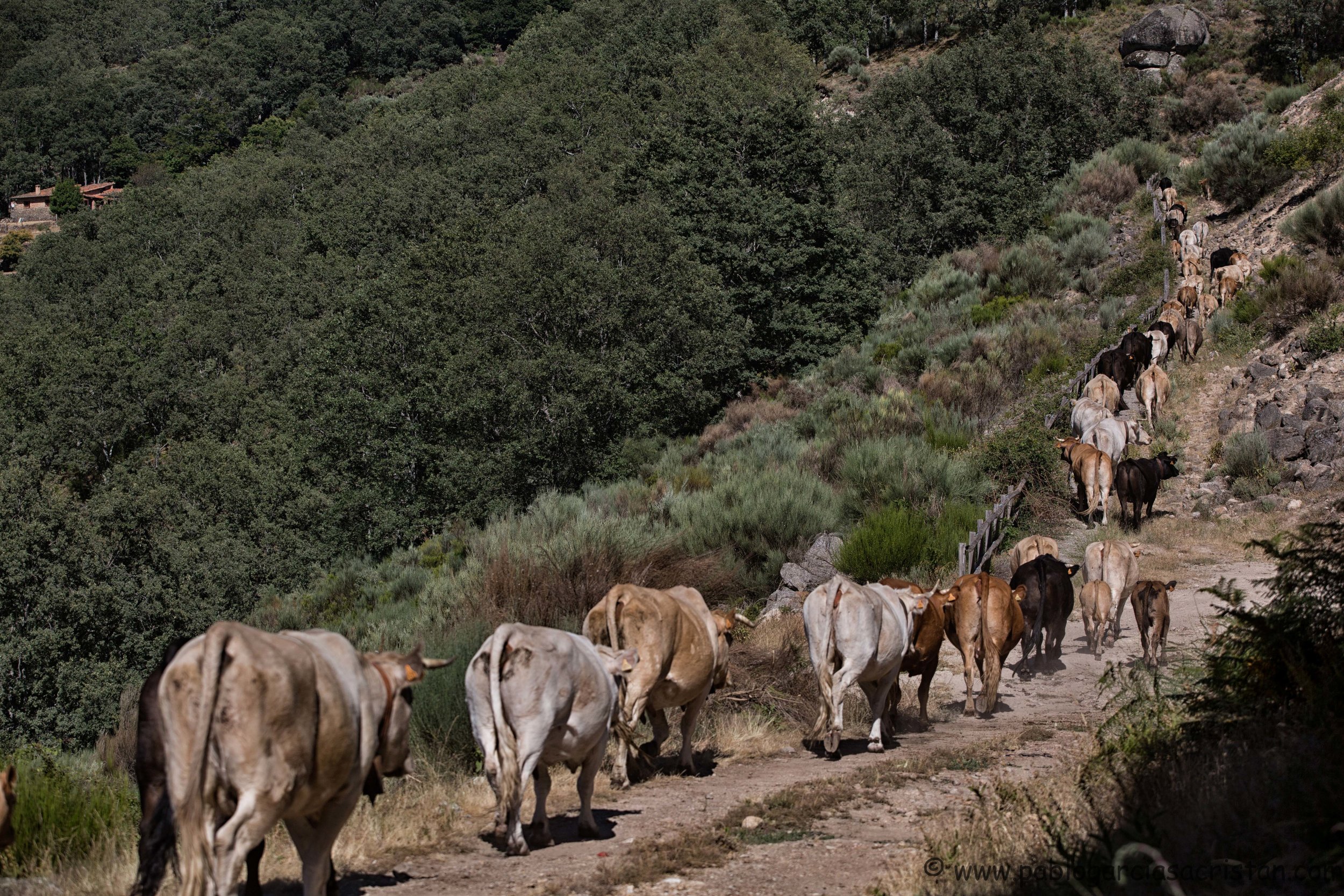
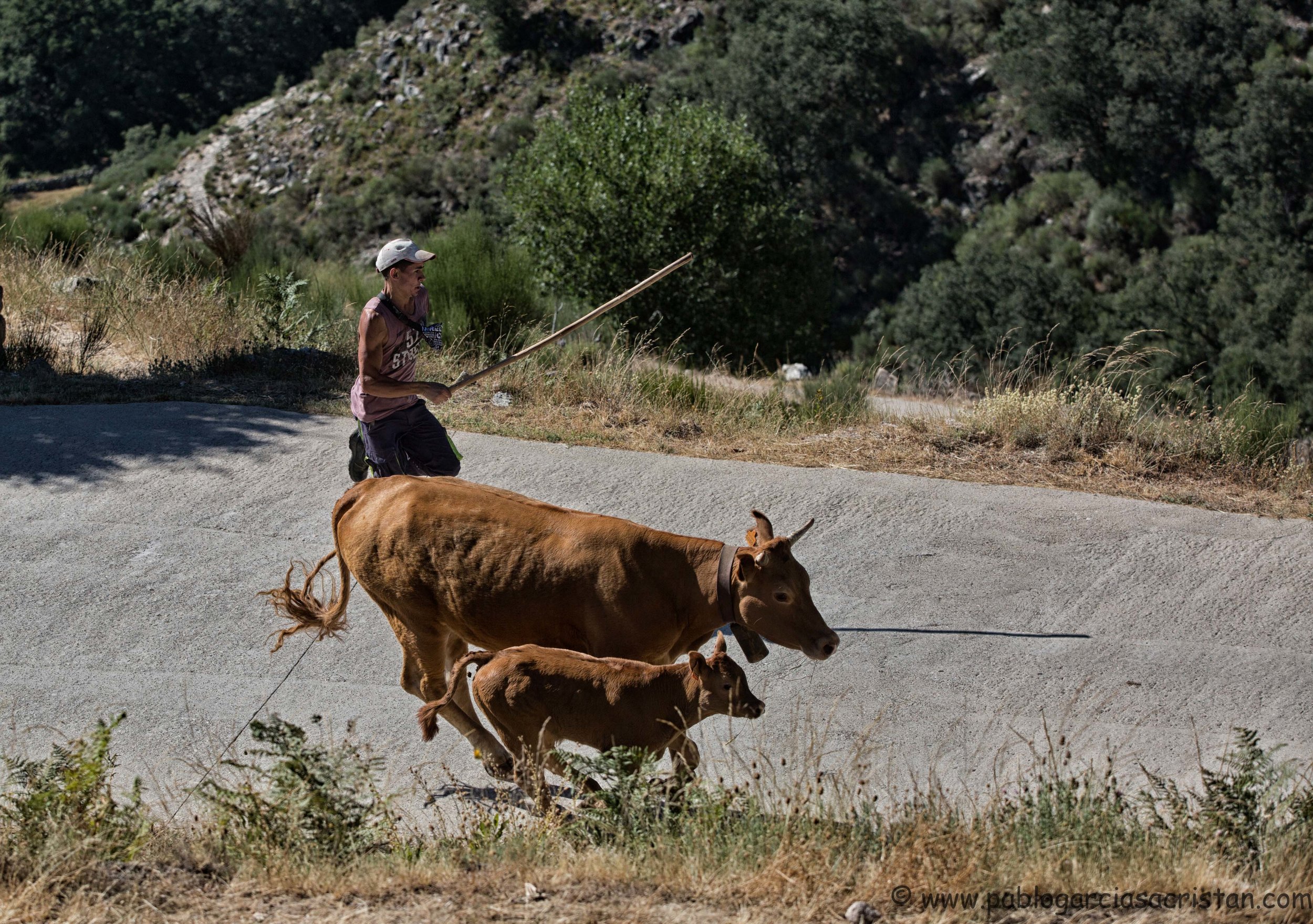
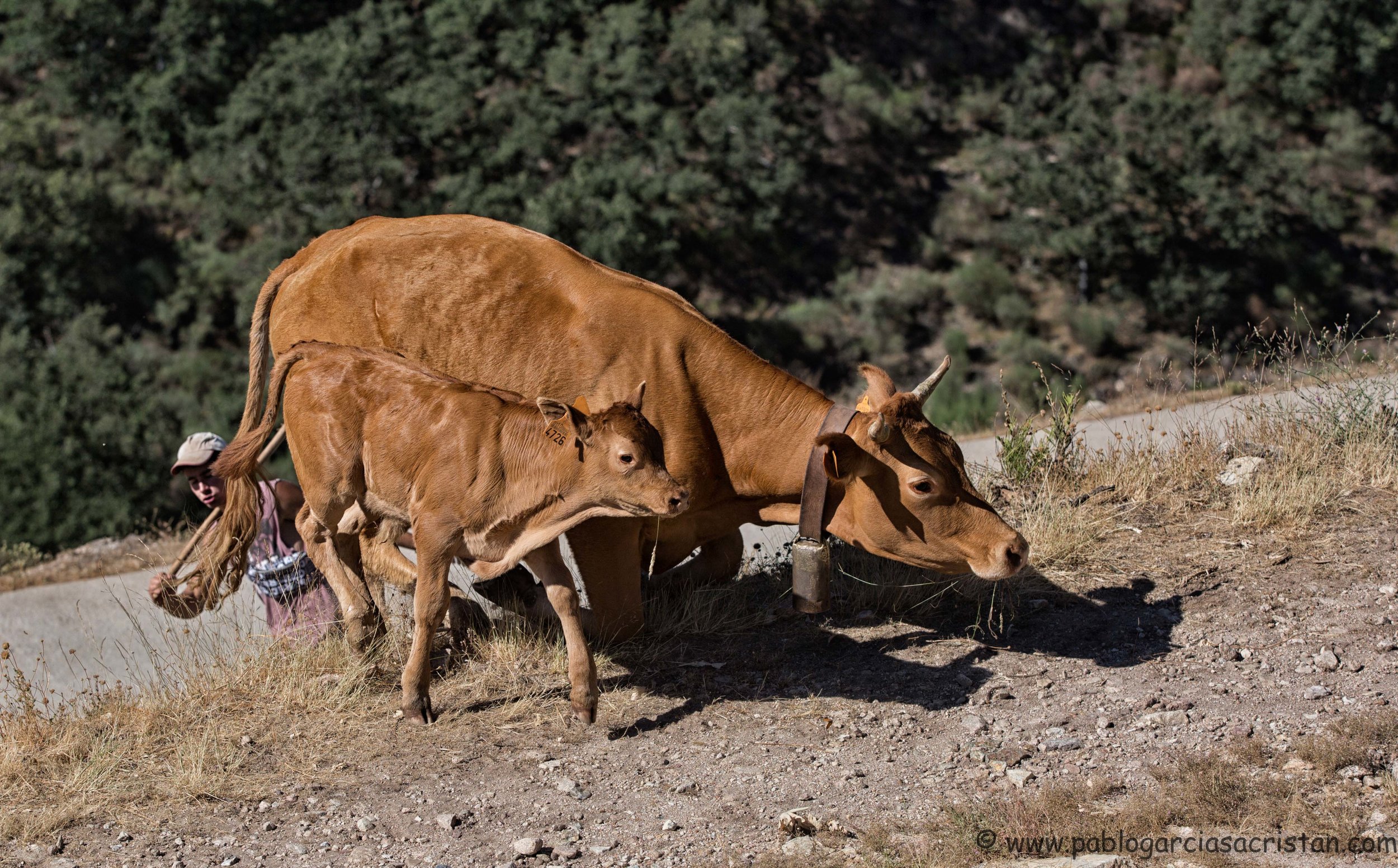
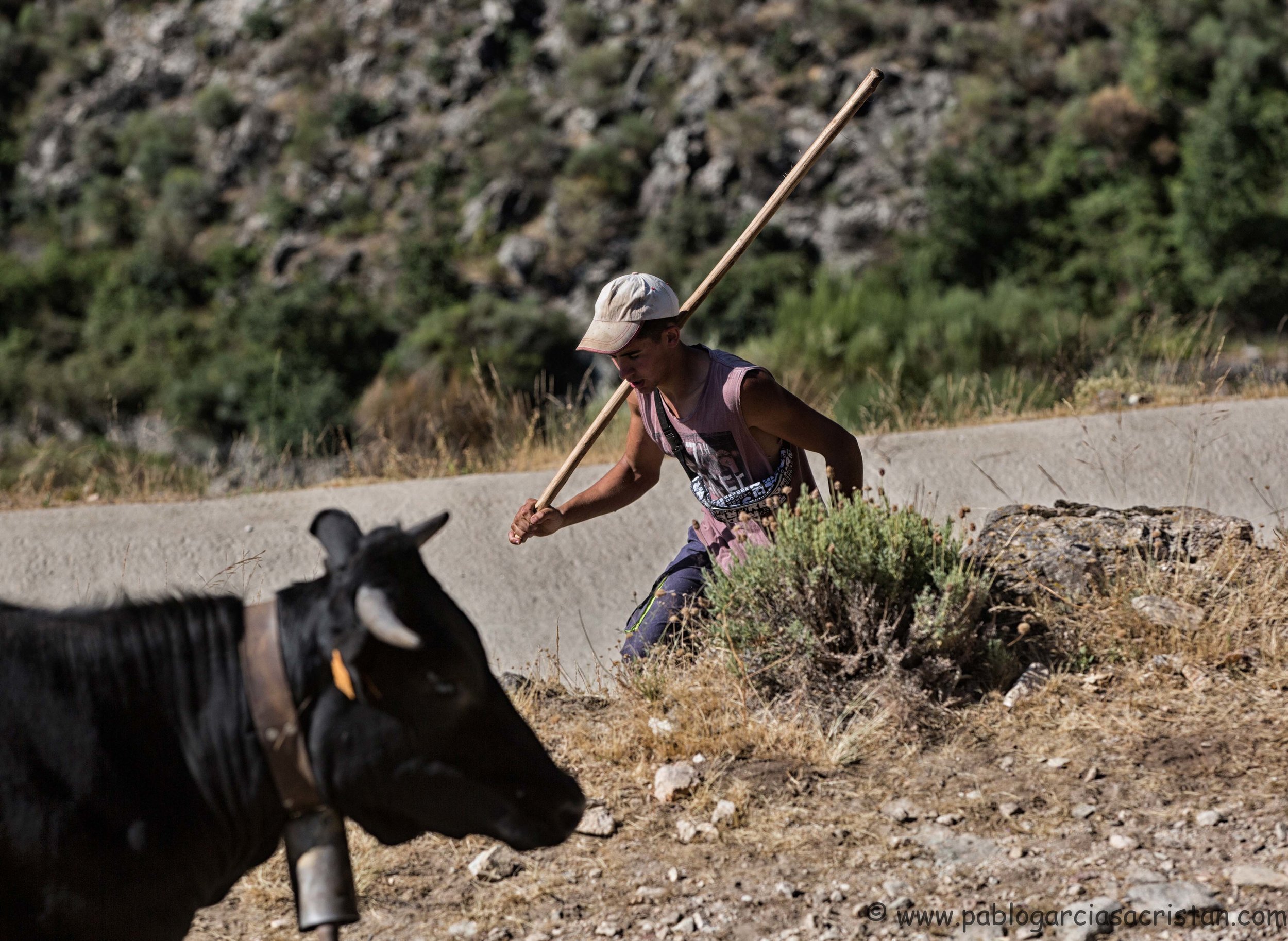
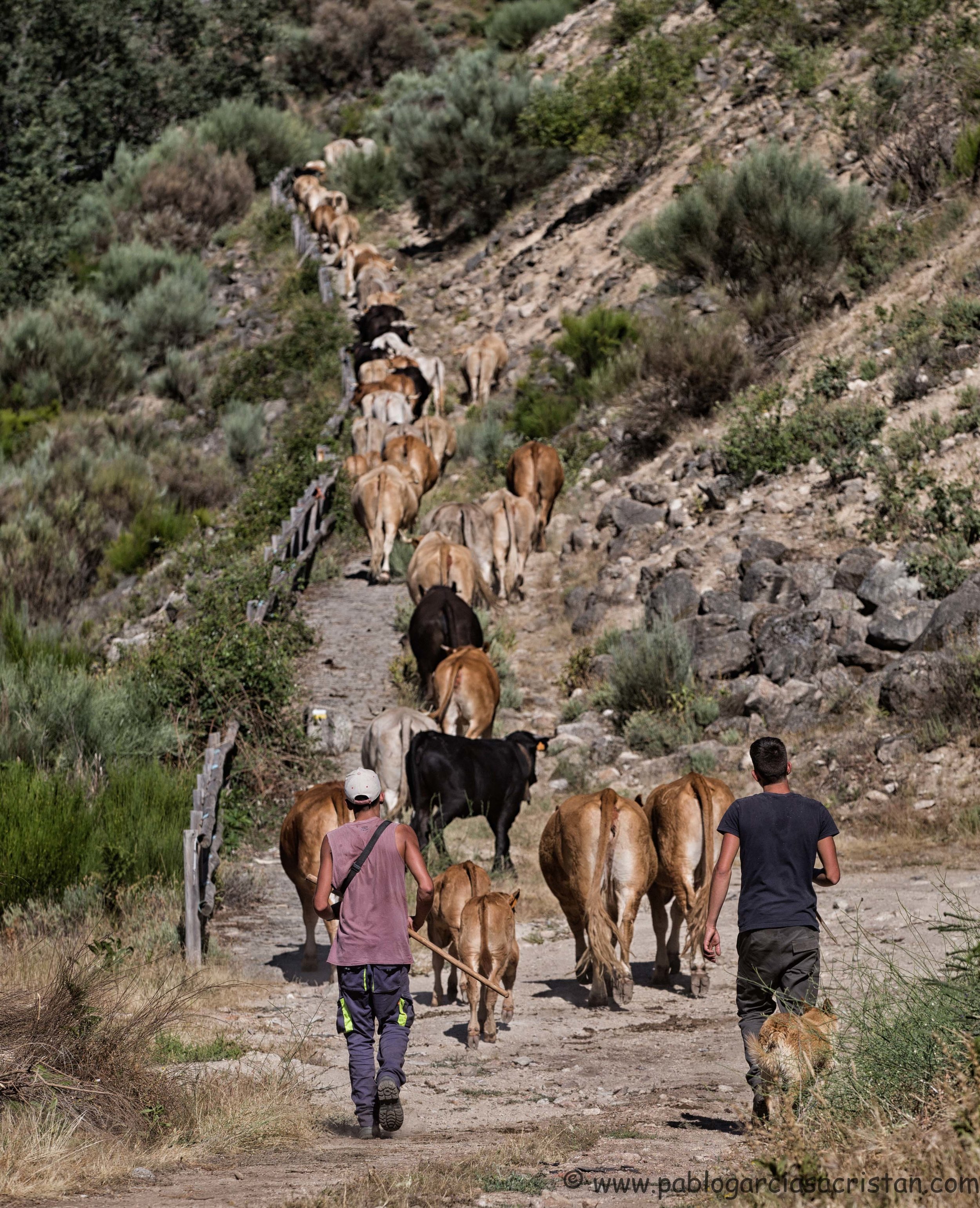
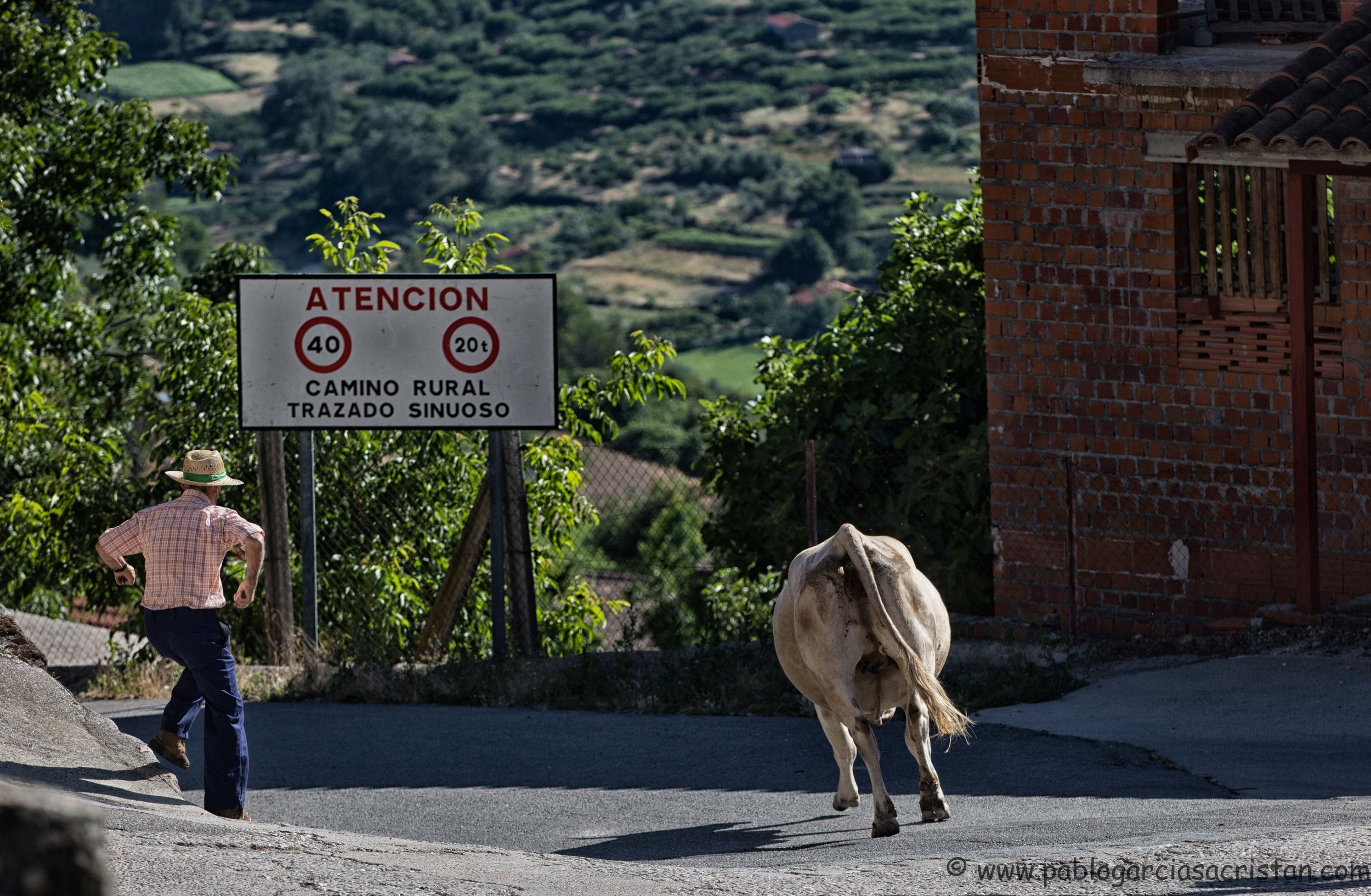
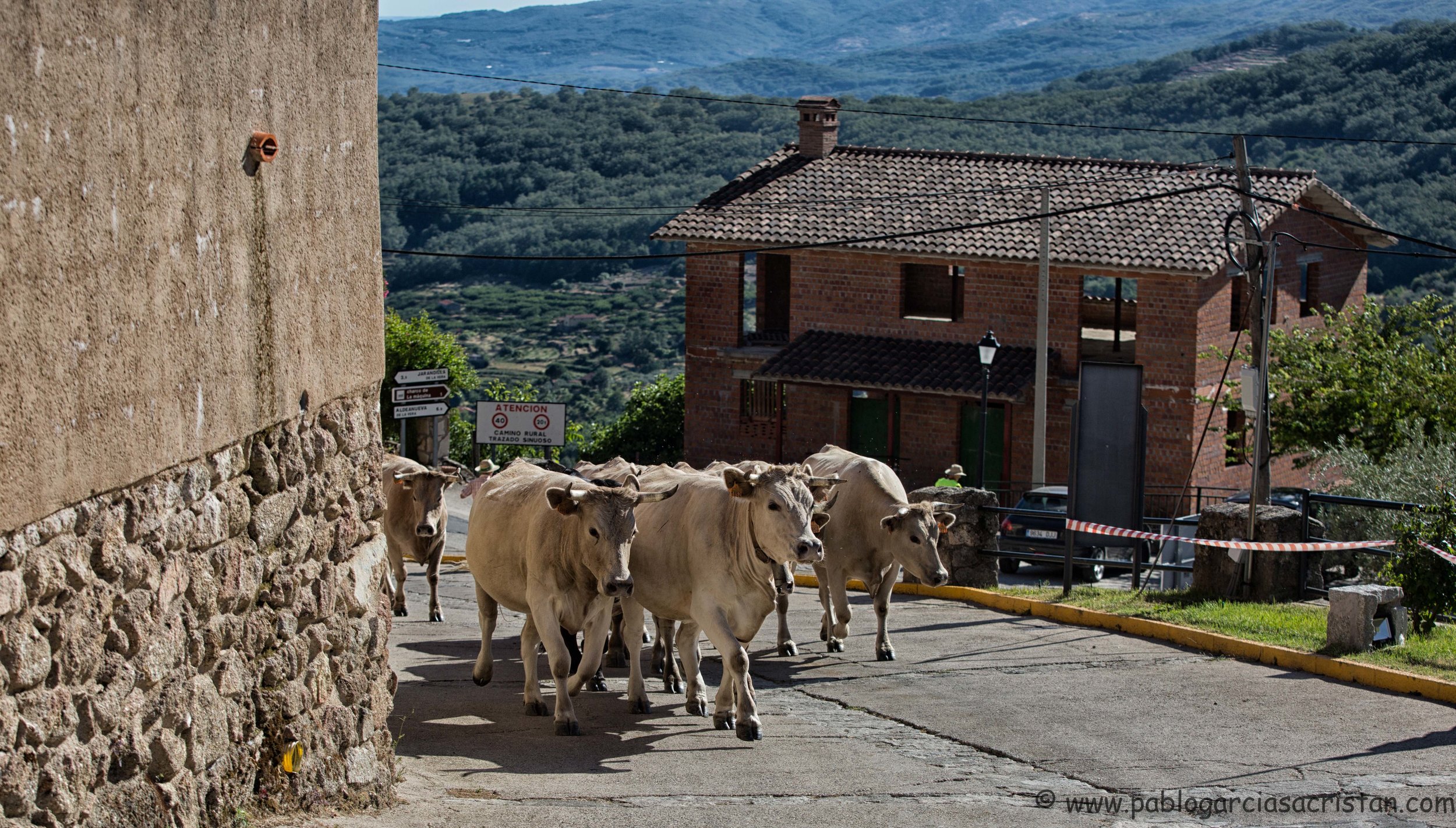
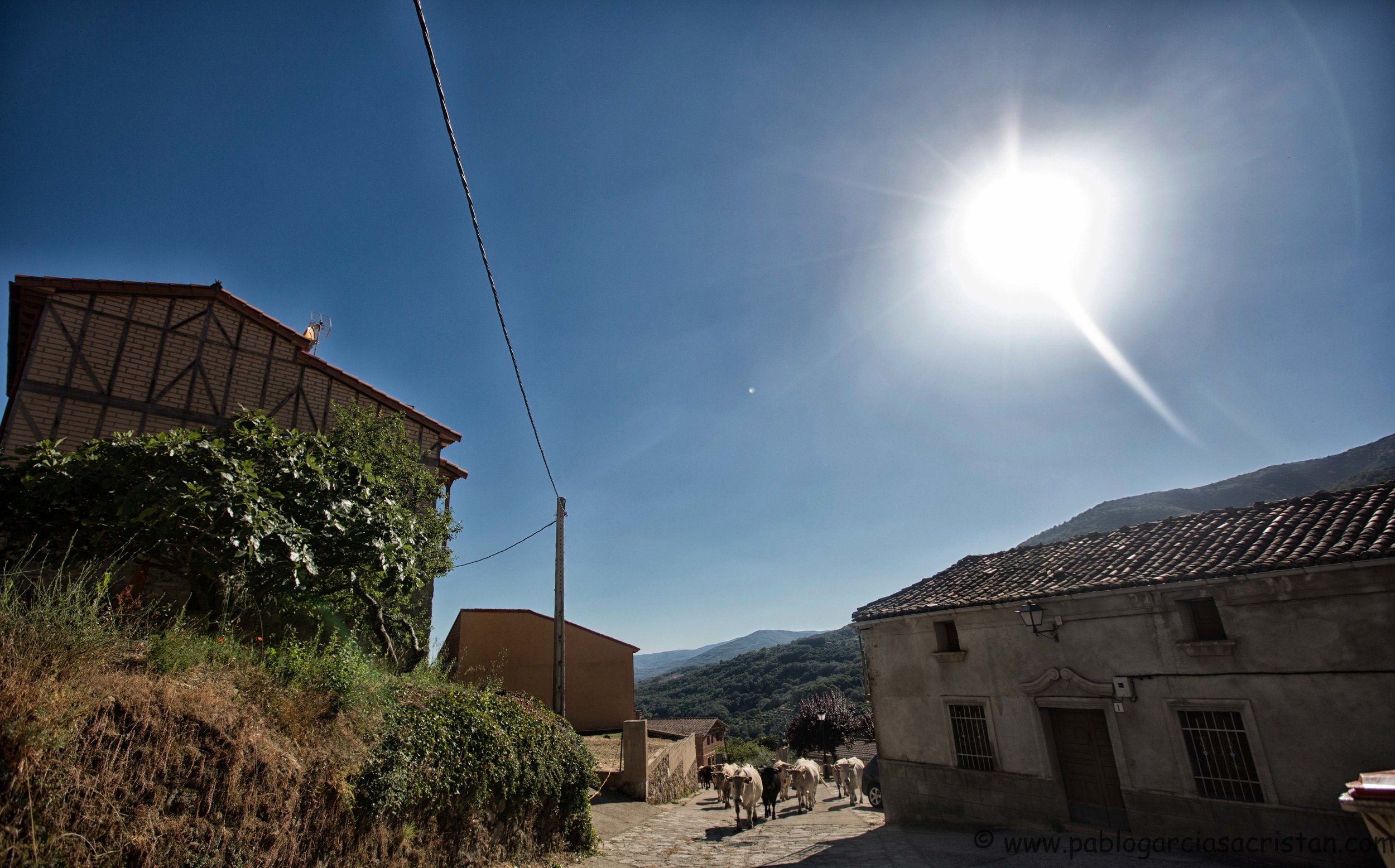
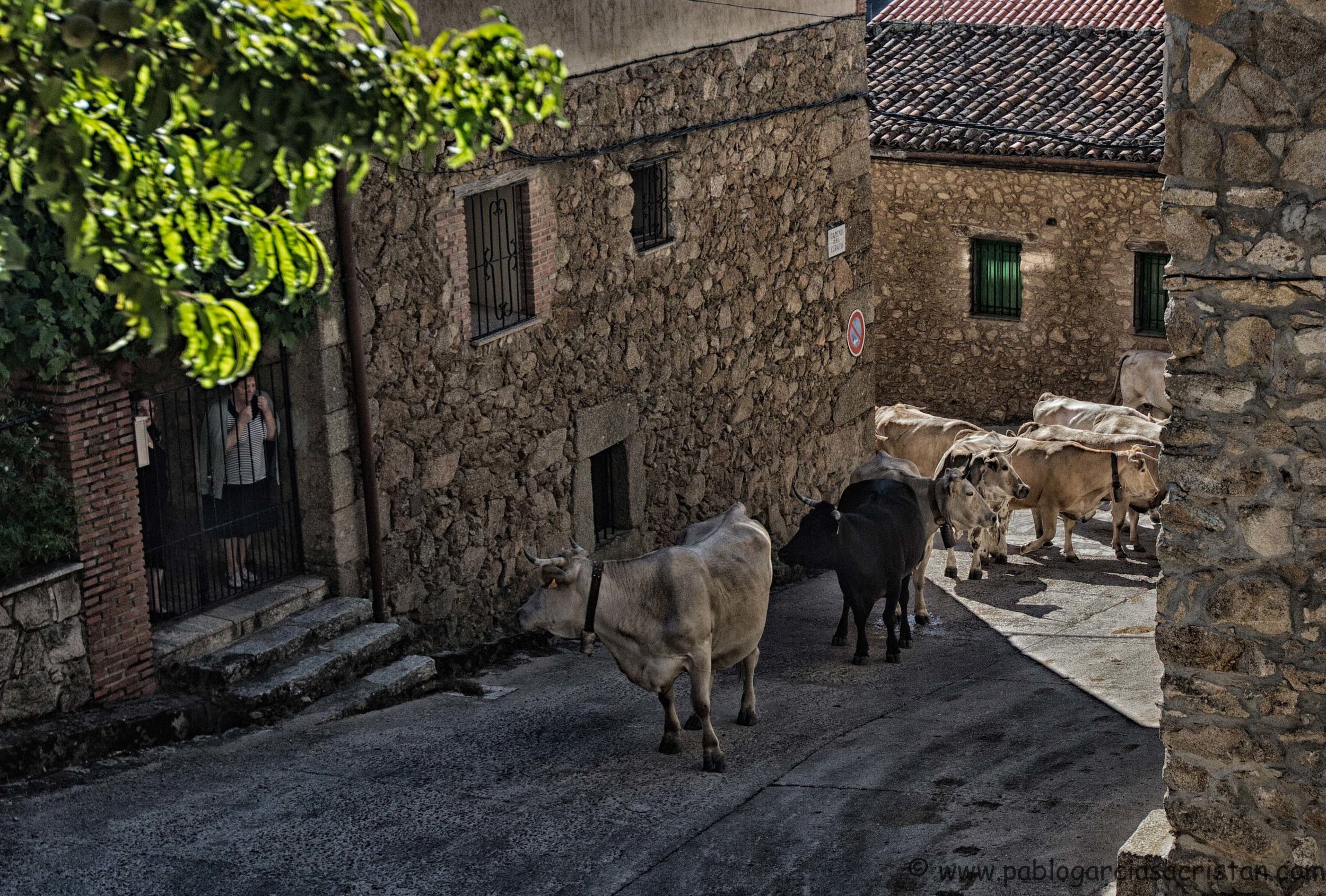
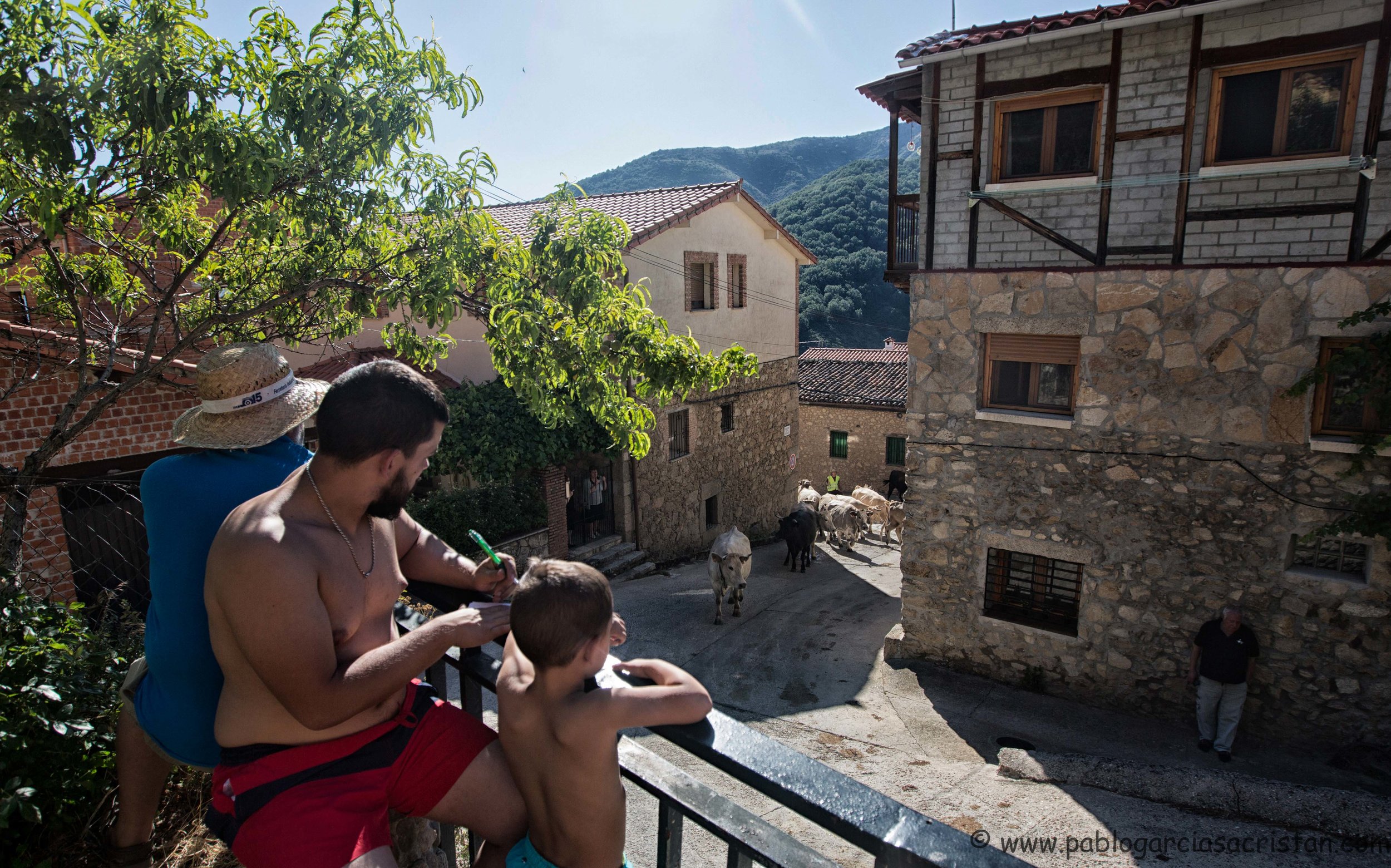
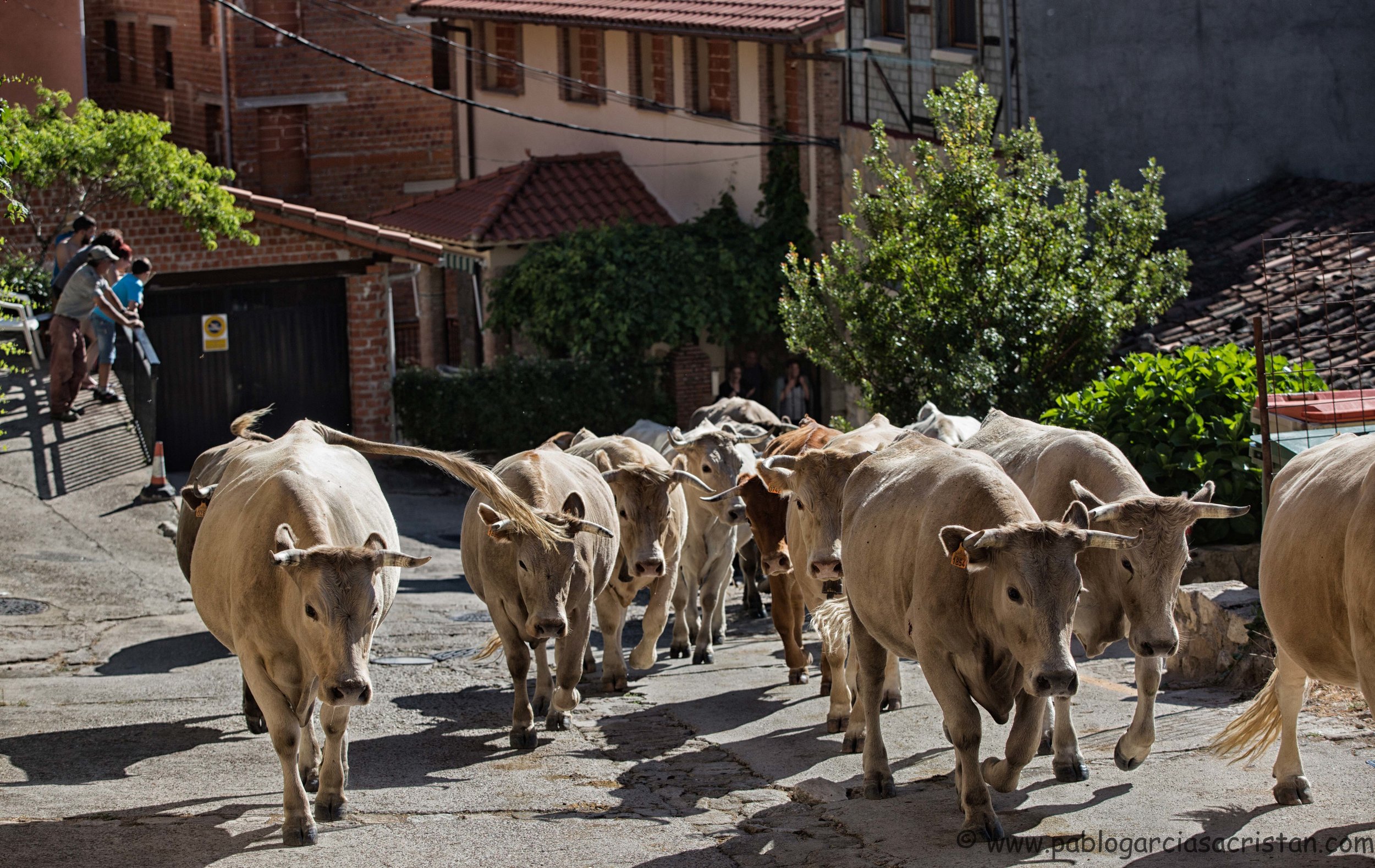
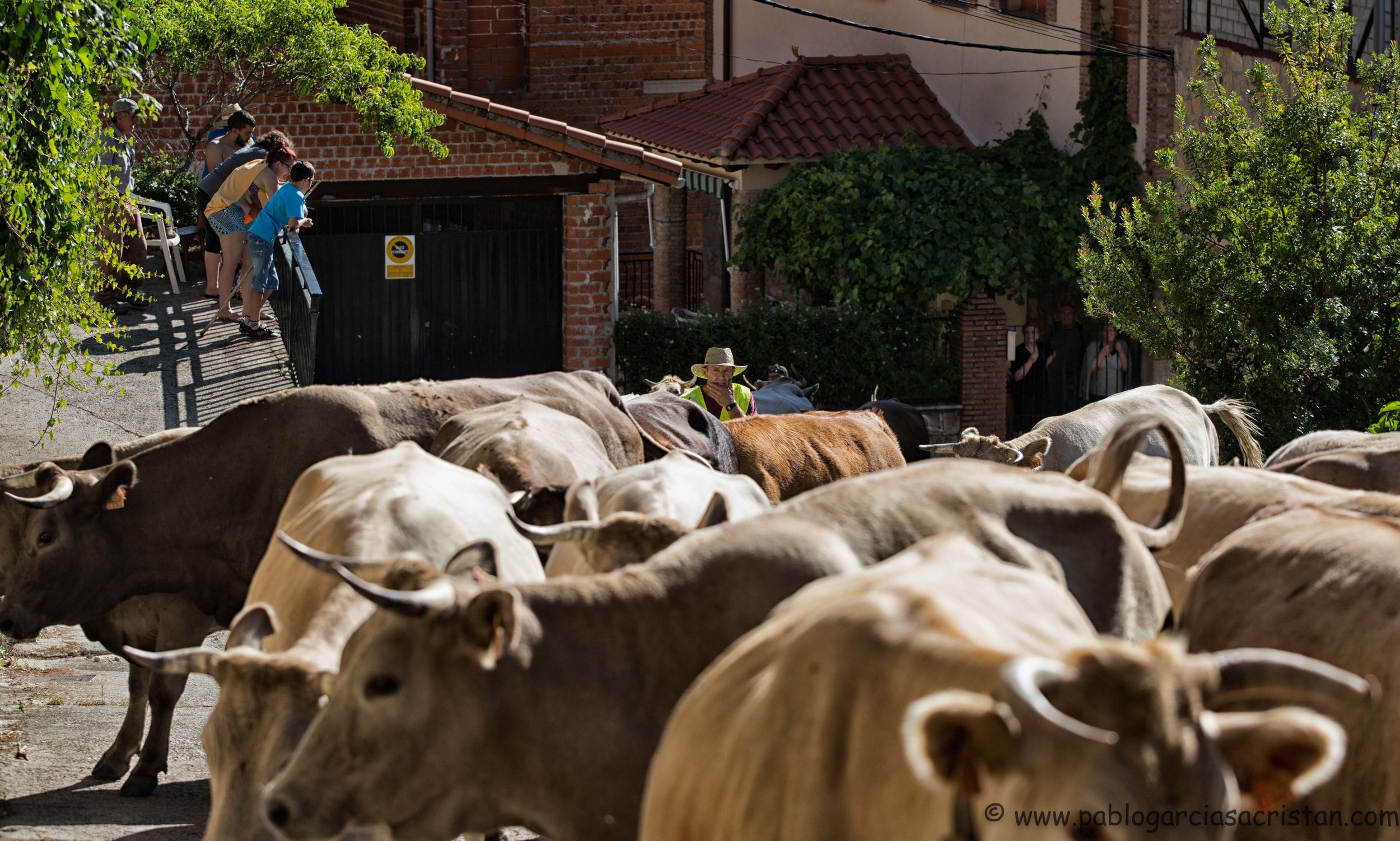
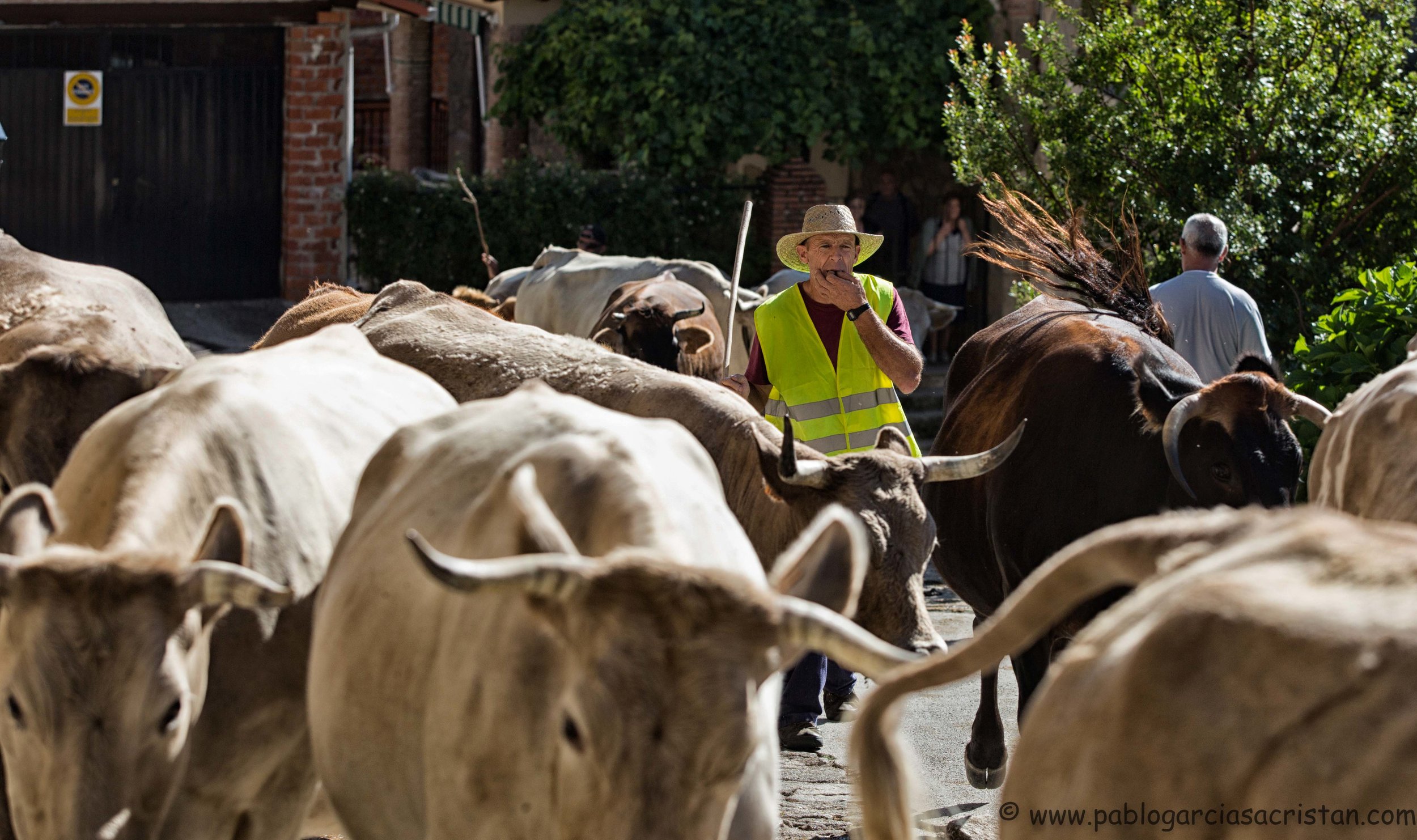
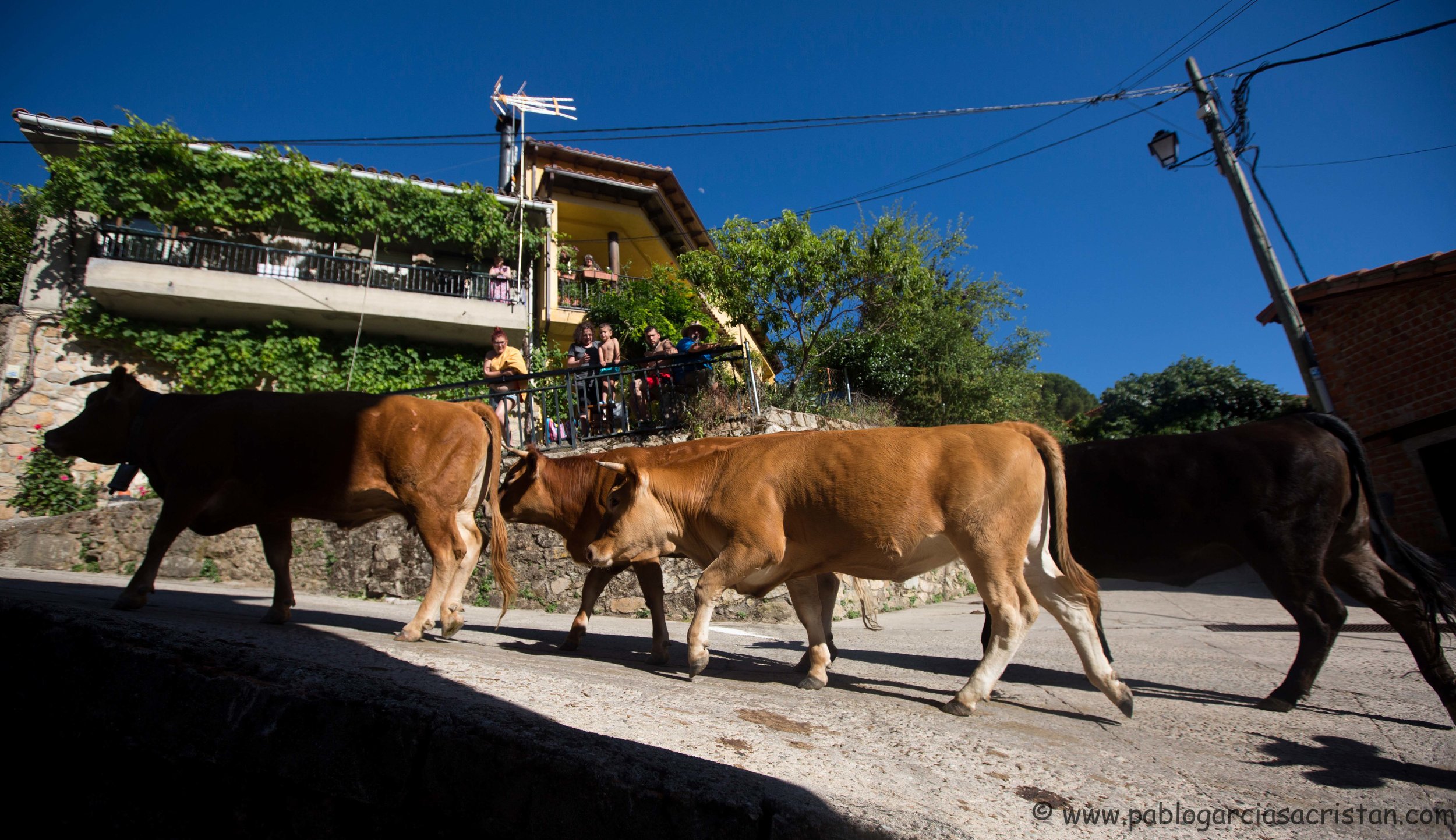
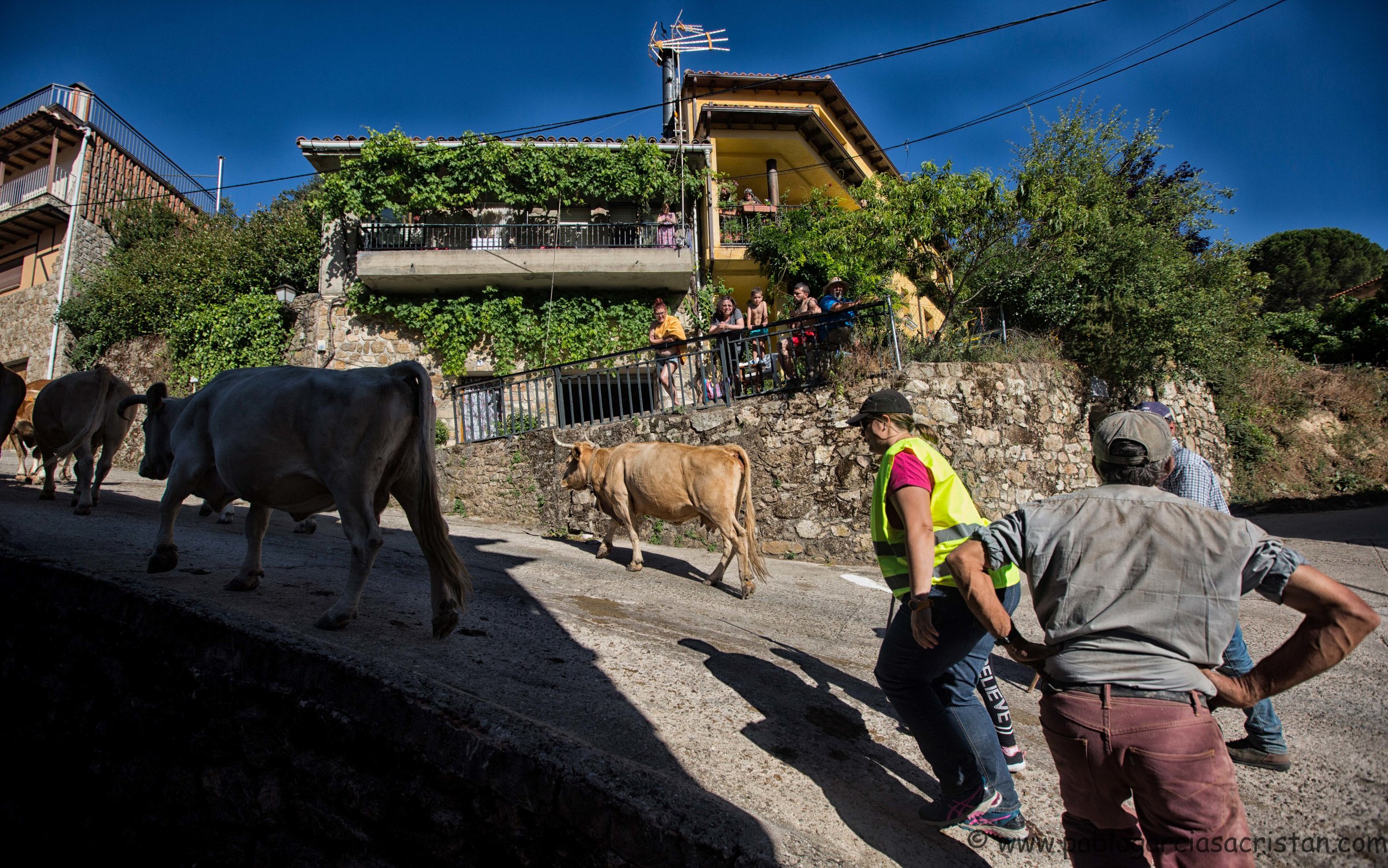
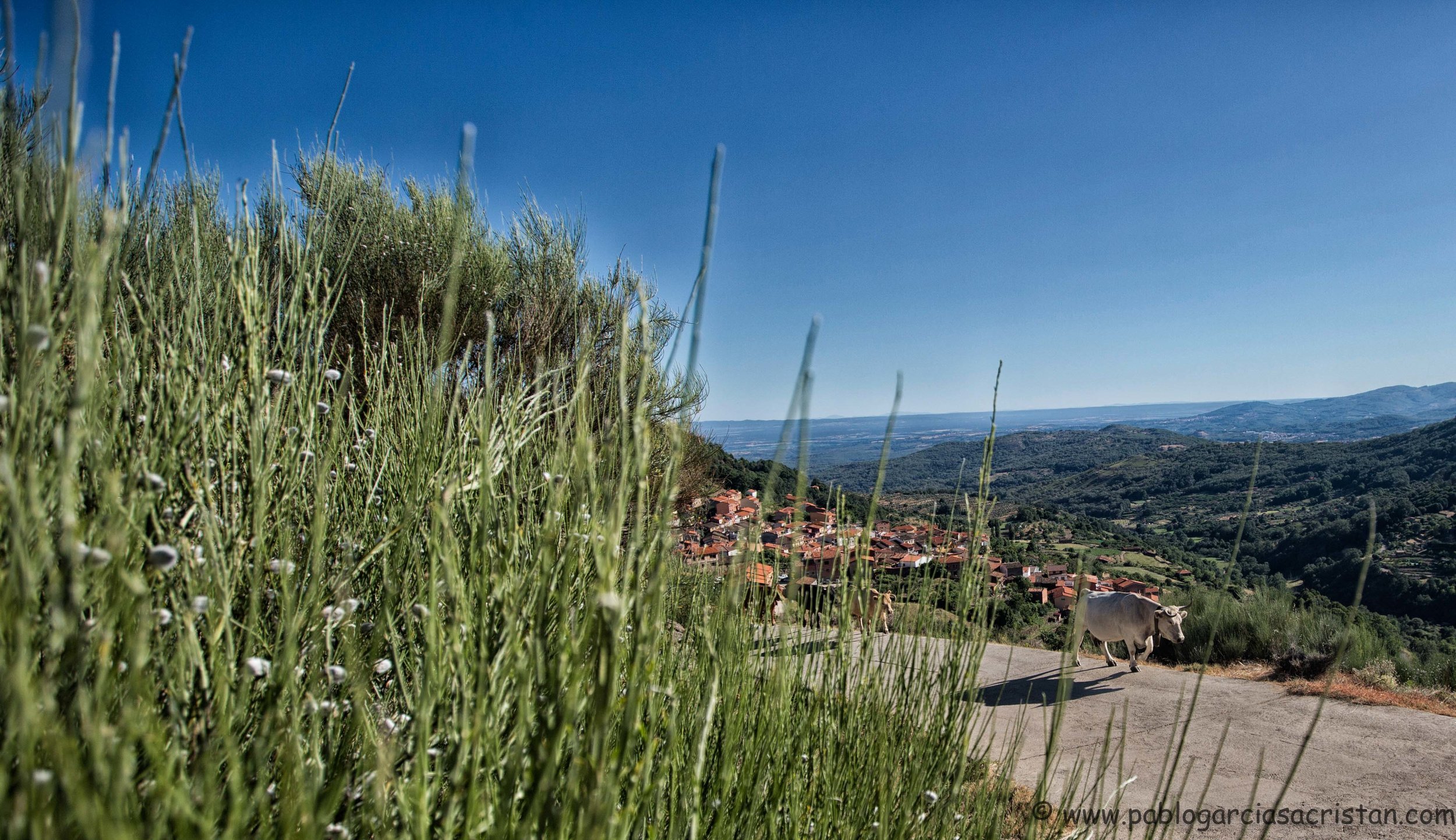
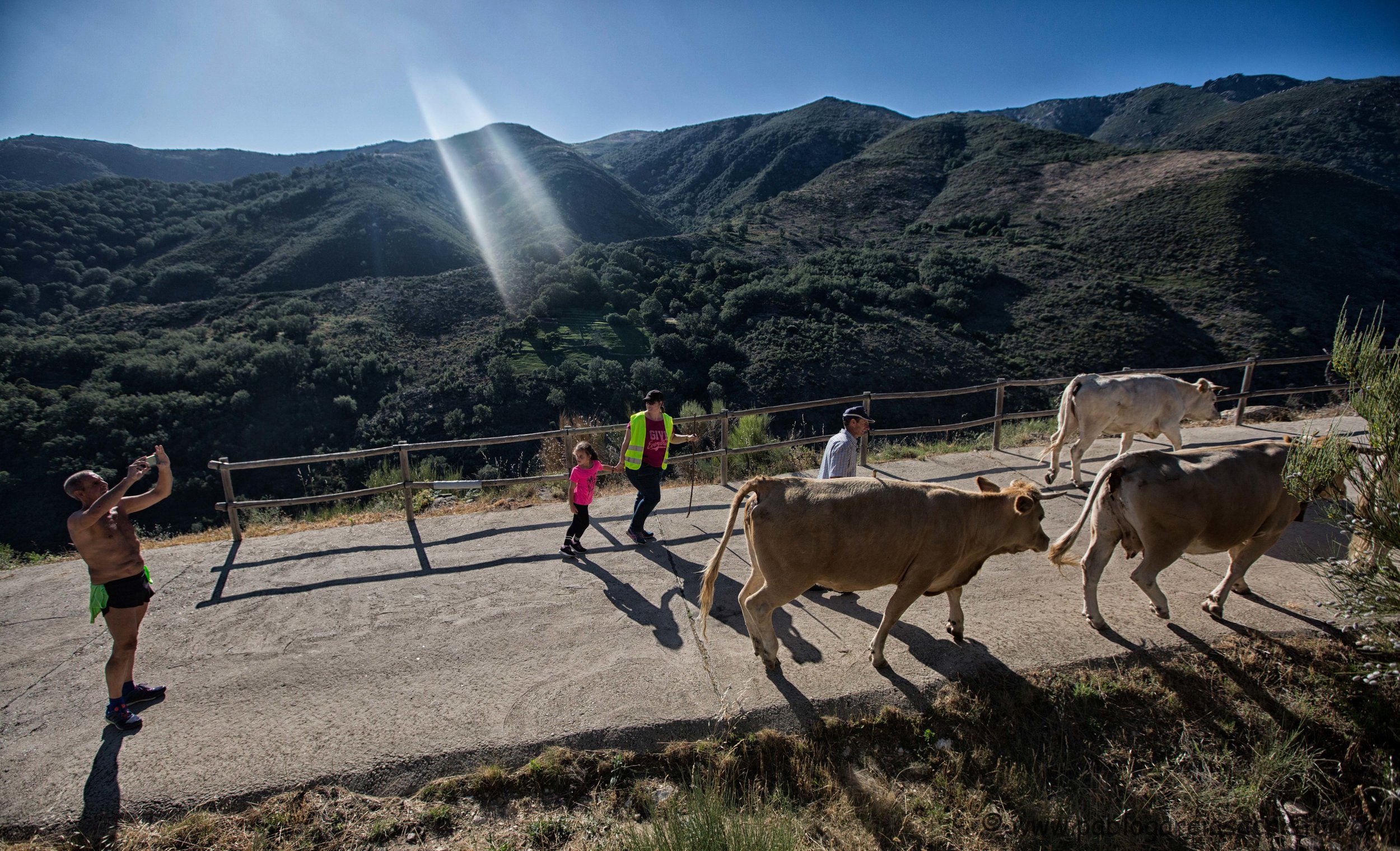
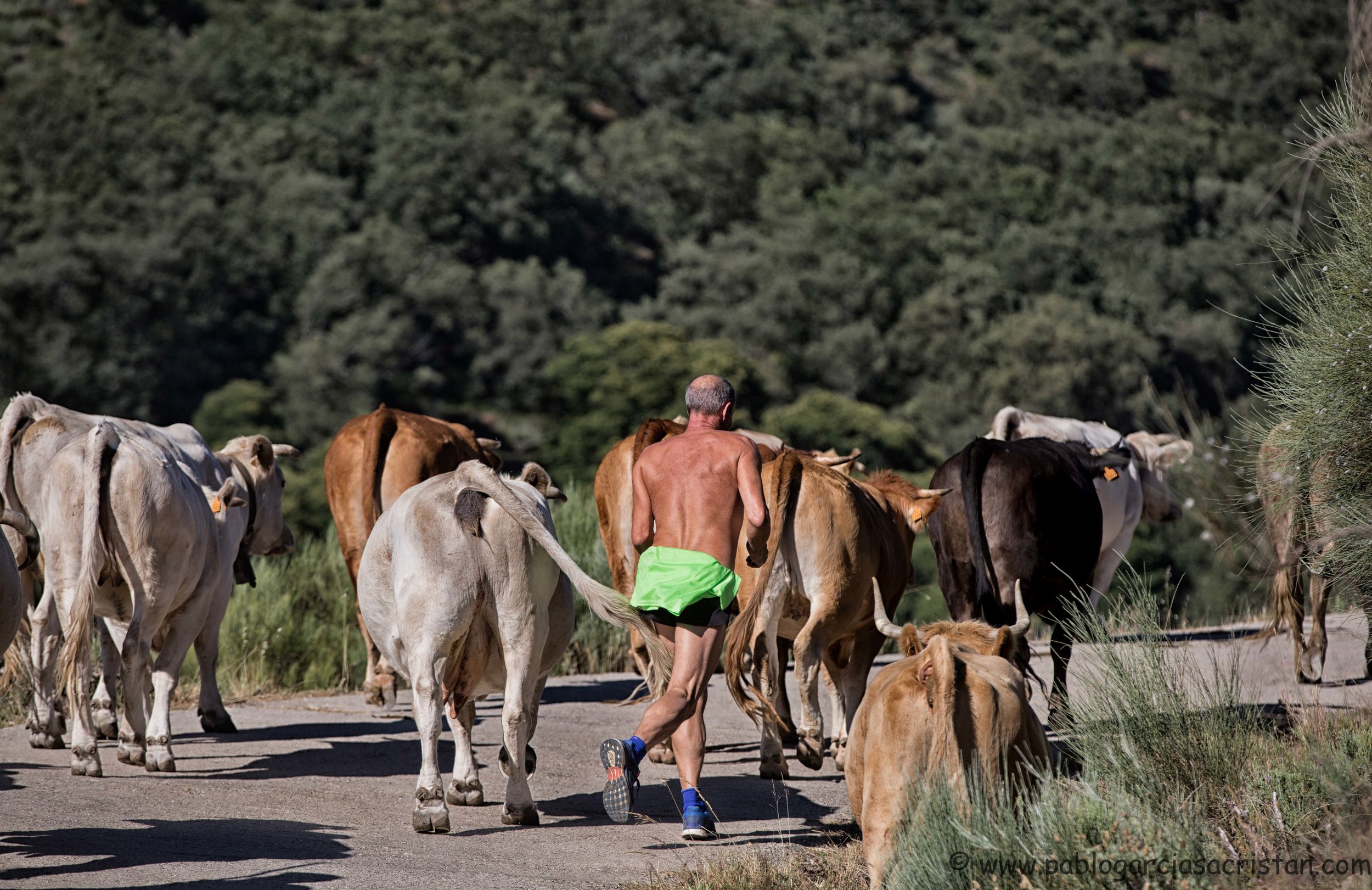
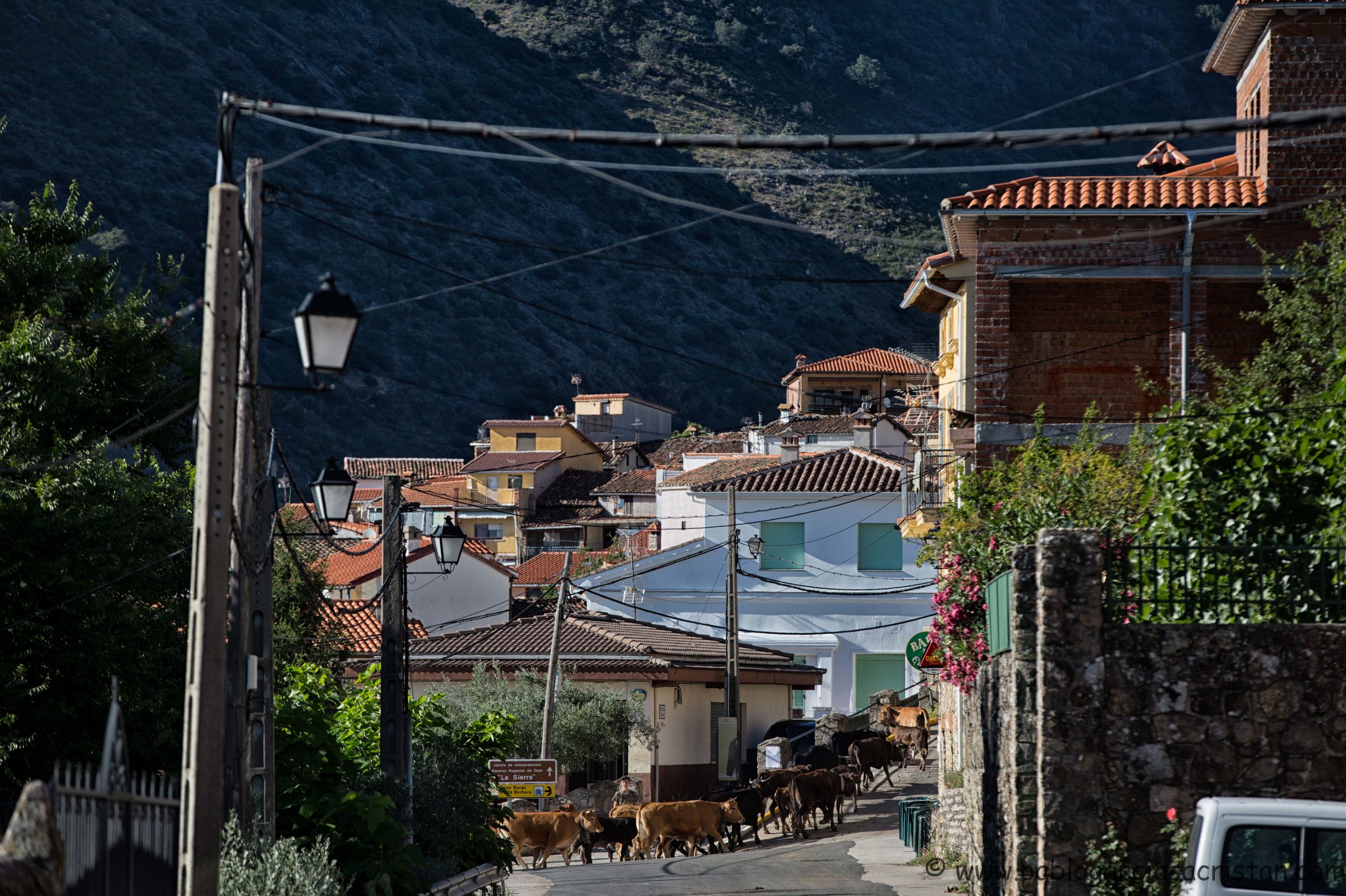
LA TRASHUMANCIA EN GUIJO DE SANTA BÁRBARA (CÁCERES)
Guijo de Santa Bárbara es un pequeño pueblo de la comarca cacereña de La Vera
que basa su economía en la agricultura y en la ganadería trashumante. Destaca este
pueblopor elgrancensodevacas de aptitudcárnica, sumandoentre15 ganaderos
alrededor de 1000 cabezas, cifra realmente notable si se tiene en cuenta que la población
humana de la localidad apenas rebasa los 400 habitantes.
El ganado vacuno de este municipio realiza cortos desplazamientos por lo que,
técnicamente, no se considera trashumancia sino trasterminancia ya que el ganado
nunca rebasa los límites de la provincia. Durante los meses de invierno y primavera, el
ganado pasta en las dehesas de la comarca cacereña del Campo Arañuelo. A finales de
junio o principios de julio, cuando el pasto de la dehesa se seca y el agua comienza a
escasear, los ganaderos trasladan el ganado a la sierra de Guijo de Santa Bárbara,
realizando un recorrido de 20 a 40 kilómetros en el que invierten 1 ó 2 jornadas. Todos
los ganaderos del pueblo se reúnen para fijar el día en el que todas las vacas subirán a la
sierra.
El ganado sube por una vía pecuaria atravesando los pinares del Tiétar y las dehesas y
robledales de Jarandilla de la Vera para llegar al pueblo de Guijo de Santa Bárbara.
Constituye todo un espectáculo el ver pasar a las vacas por las calles del pueblo con el
alegre sonido de sus cencerros.
Muchos ganaderos detienen su ganado en la antiquísima plaza de toros de la localidad
para cambiar los grandes cencerros a algunas vacas y para separar a las que por distintos
motivos no subirán a la sierra. Posteriormente el ganado continúa subiendo hasta llegar
a las zonas de la sierra en las que pastan año tras año. Durante todo el verano el ganado
se alimentade losverdespastosserranos, subiendo losvaquerosregularmente para
comprobar el estado de los animales. Aunque en la sierra del municipio pastan las vacas
de todas las familias del pueblo, cada uno conoce perfectamente sus vacas que están
debidamente marcadas con el hierro de la ganadería y con la ancestral señal de oreja.
En el otoño, las vacas van poco a poco bajando hasta las zonas de robledal para
alimentarse de las bellotas y aprovechar los prados particulares que cada ganadero
posee. Cuando el frío impide el crecimiento de la hierba, los ganaderos vuelven a
realizar el recorrido hasta las dehesas para que las vacas pasen el invierno allí.
THE TRASHUMANCE IN GUIJO OF SANTA BÁRBARA (CÁCERES)
Guijo de Santa Bárbara is a small village in the Caceres region of La Vera
Which bases its economy on agriculture and transhumant livestock. Highlights this
Village by the large census of cows of meat aptitude, adding among 15 cattle ranchers
Around 1000 heads, a really remarkable figure if one takes into account that the population
Of the town barely exceeds 400 inhabitants.
The bovine cattle of this municipality makes short displacements reason why,
Technically, transhumance is not considered as a consequence, since cattle
Never exceeds the limits of the province. During the winter and spring months, the
Cattle grazing in the meadows of the Caceres region of Campo Arañuelo. By the end of
June or early July, when pasture of the pasture dries up and water begins to
Cattle ranchers move the cattle to the Sierra de Guijo de Santa Bárbara,
Making a journey of 20 to 40 kilometers in which they invest 1 or 2 days. Everybody
The cattlemen of the town gather to fix the day on which all the cows will go up to the
Mountain range.
The cattle go up a cattle path crossing the pine forests of the Tiétar and the pastures and
Robledales de Jarandilla de la Vera to reach the village of Guijo de Santa Bárbara.
It is quite a sight to see the cows pass through the streets of the village with the
Cheerful sound of their bells.
Many cattlemen stop their cattle in the old bullring of the locality
To change the big cowbells to some cows and to separate those that by different
Reasons will not rise to the mountains. Subsequently the cattle continue to rise until they arrive
To the areas of the sierra where they graze year after year. Throughout the summer cattle
It feeds on the green mountain pastures, raising the jeans regularly to
Check the condition of the animals. Although in the mountains of the municipality they graze the cows
Of all the families of the town, each one knows perfectly his cows that are
Duly marked with the iron of the cattle ranch and with the ancestral signal of ear.
In the autumn, the cows gradually go down to the oak groves to
Feed on the acorns and take advantage of the particular meadows that each farmer
has. When the cold prevents the growth of the grass, the farmers return to
Make the route to the pastures so that the cows spend the winter there.
Guijo de Santa Bárbara.. Julio de 2017.
Texto Silvestre De La Calle
Fotos Pablo García
